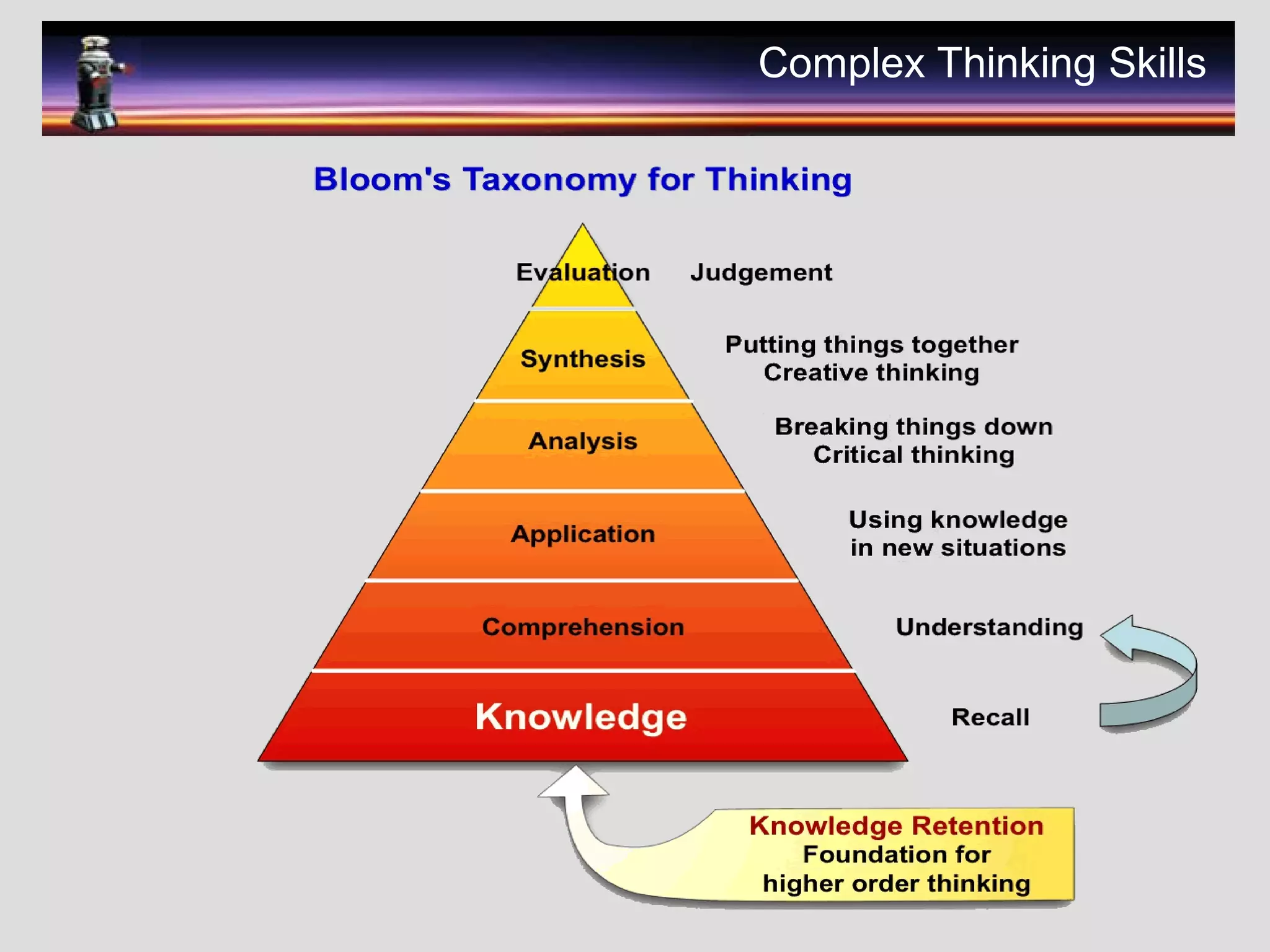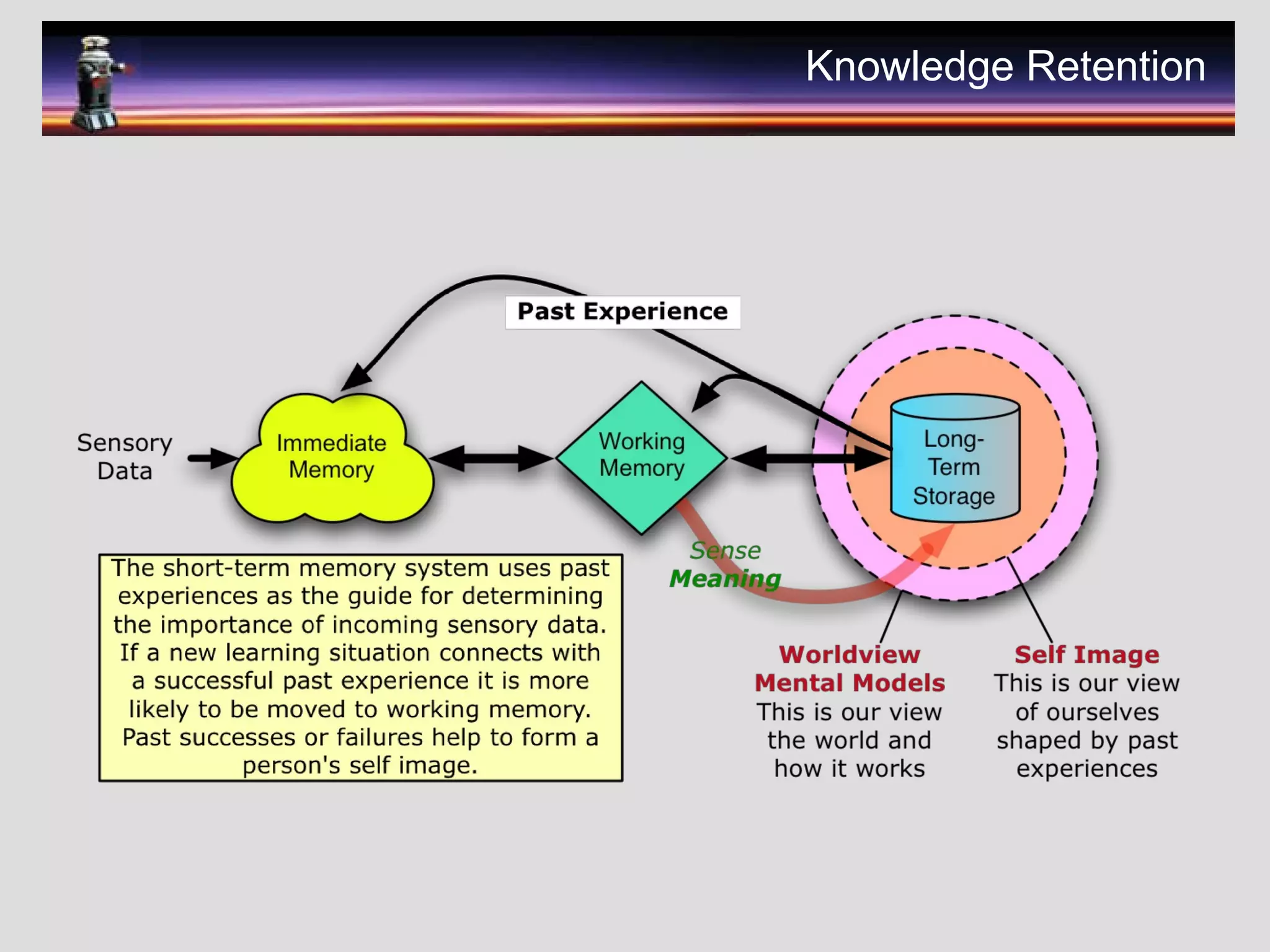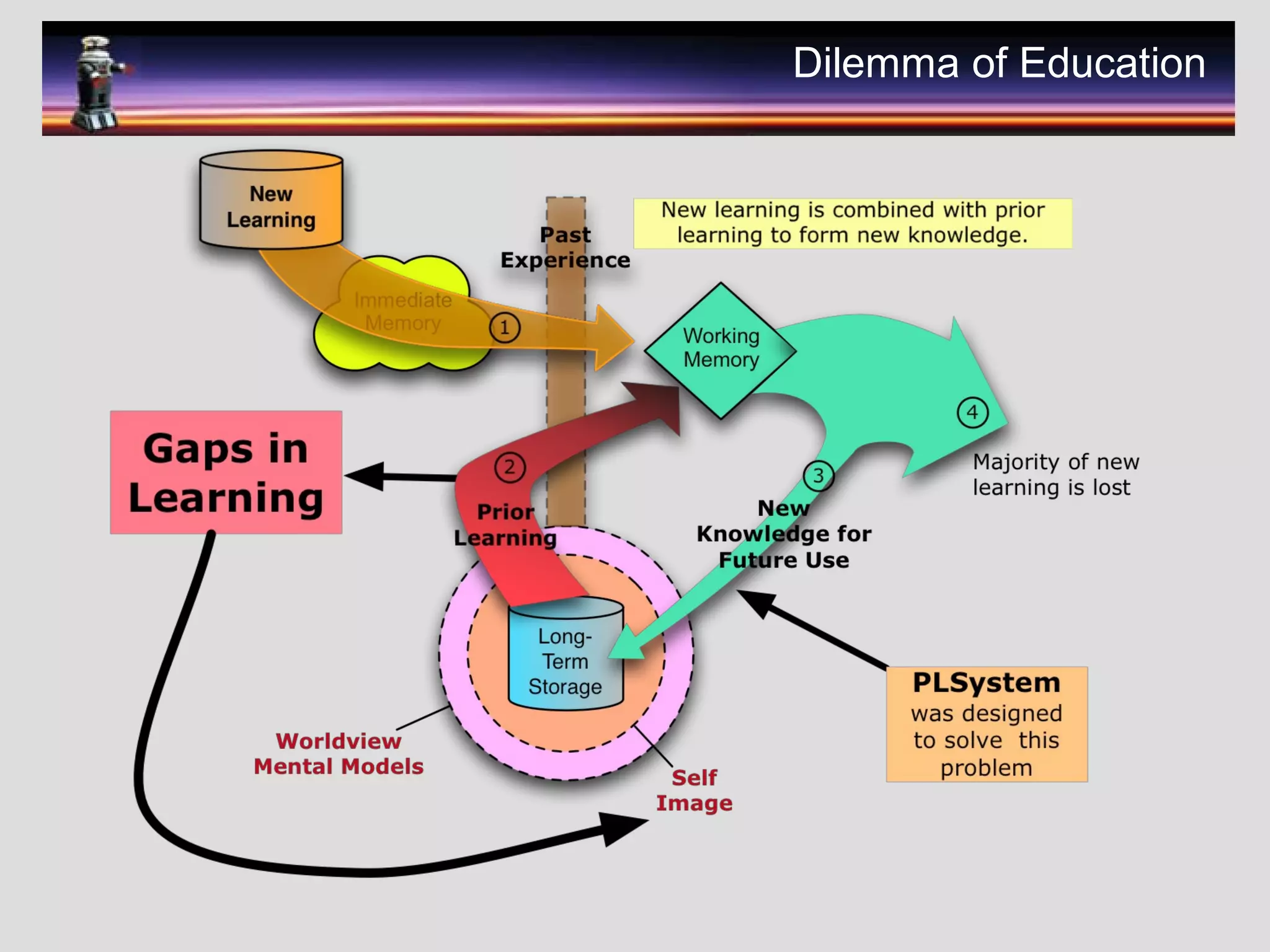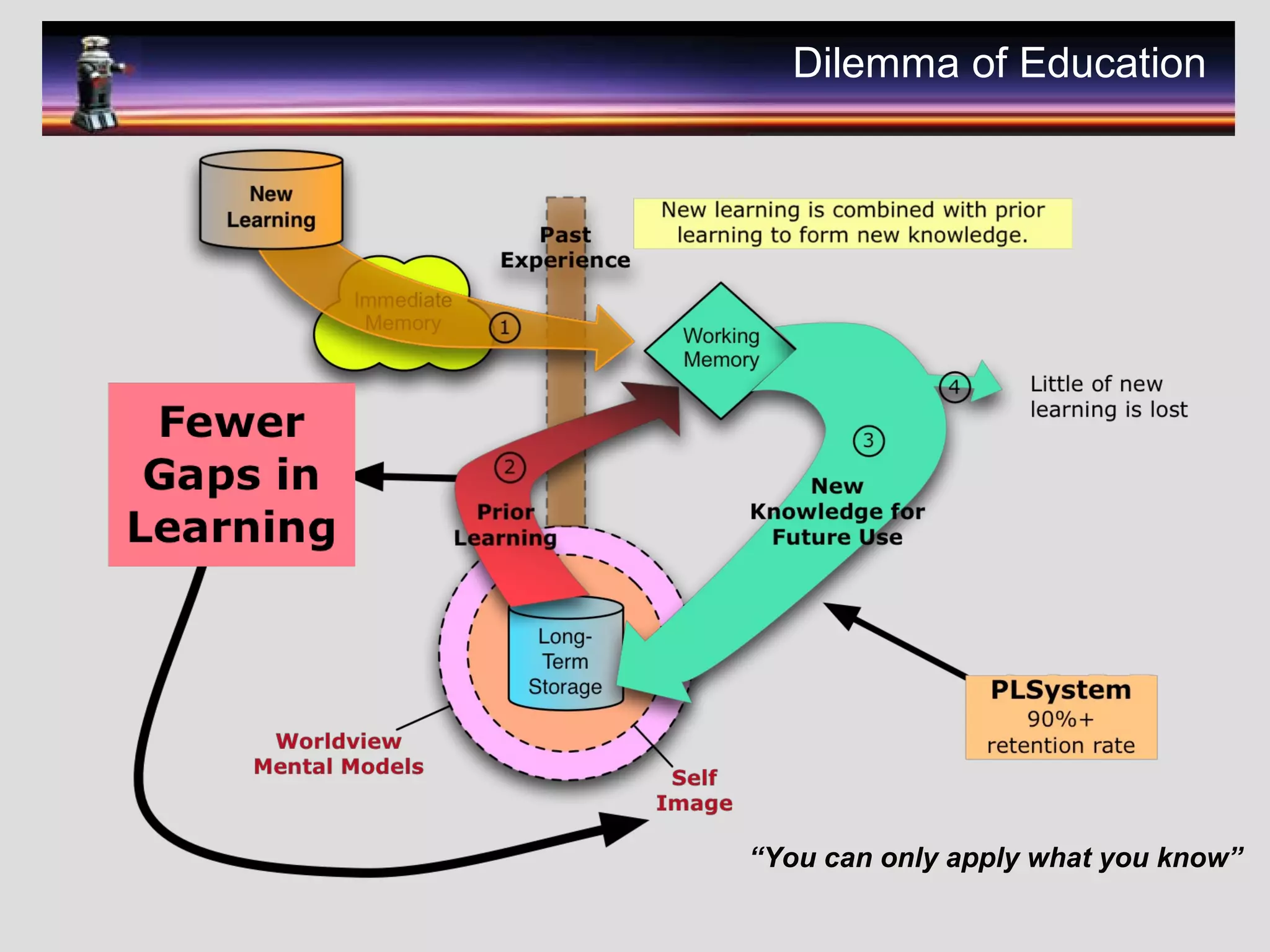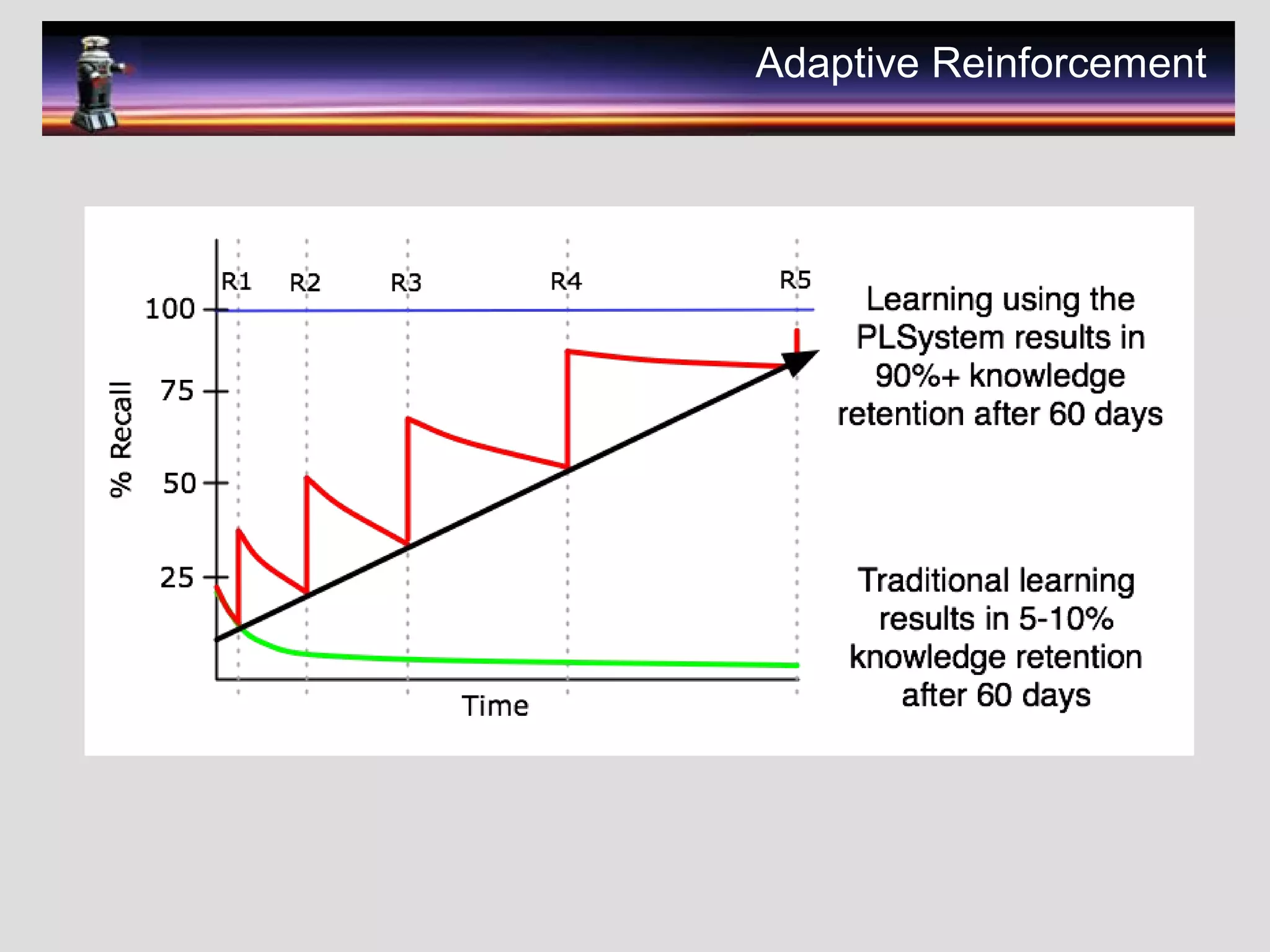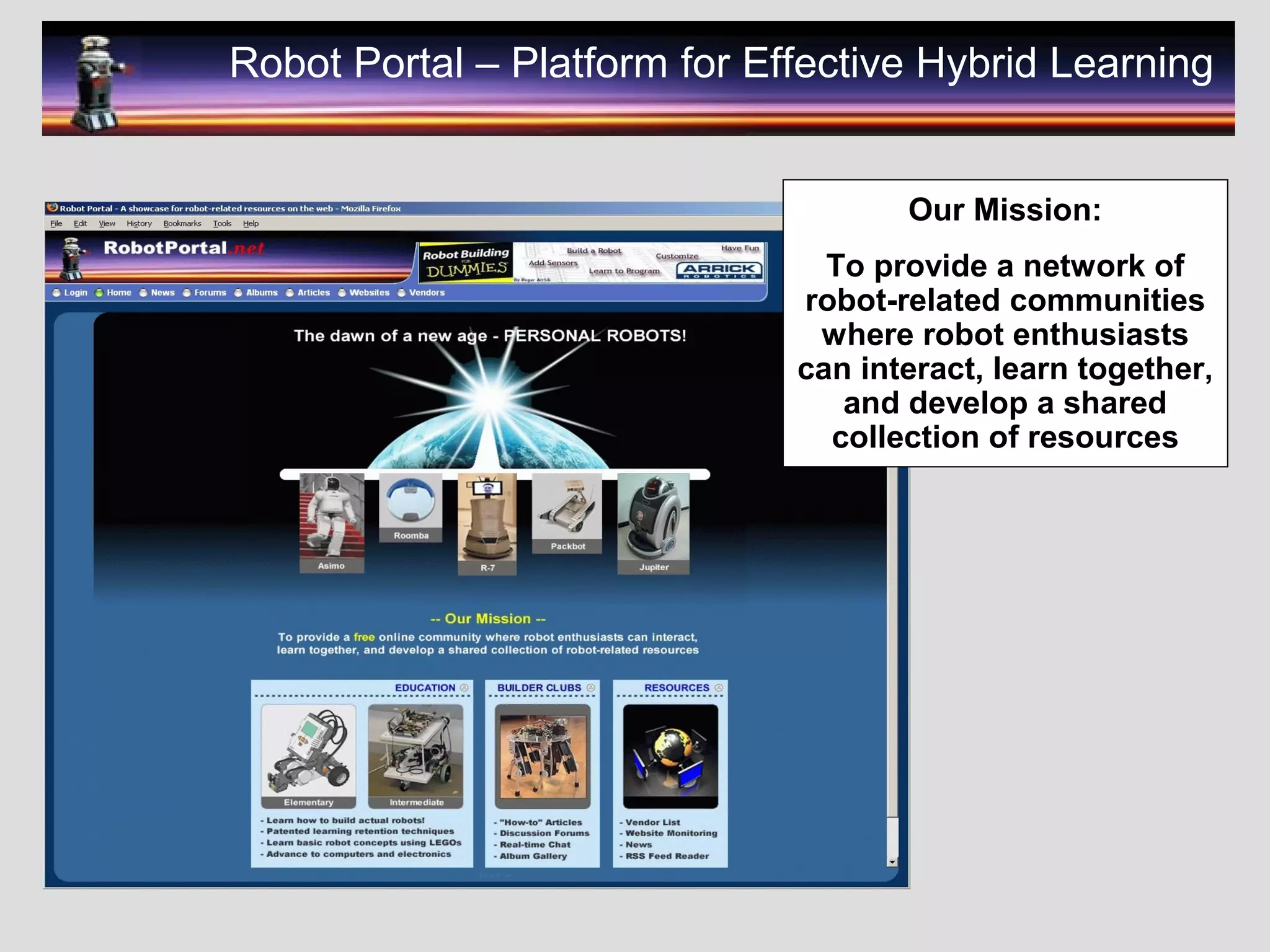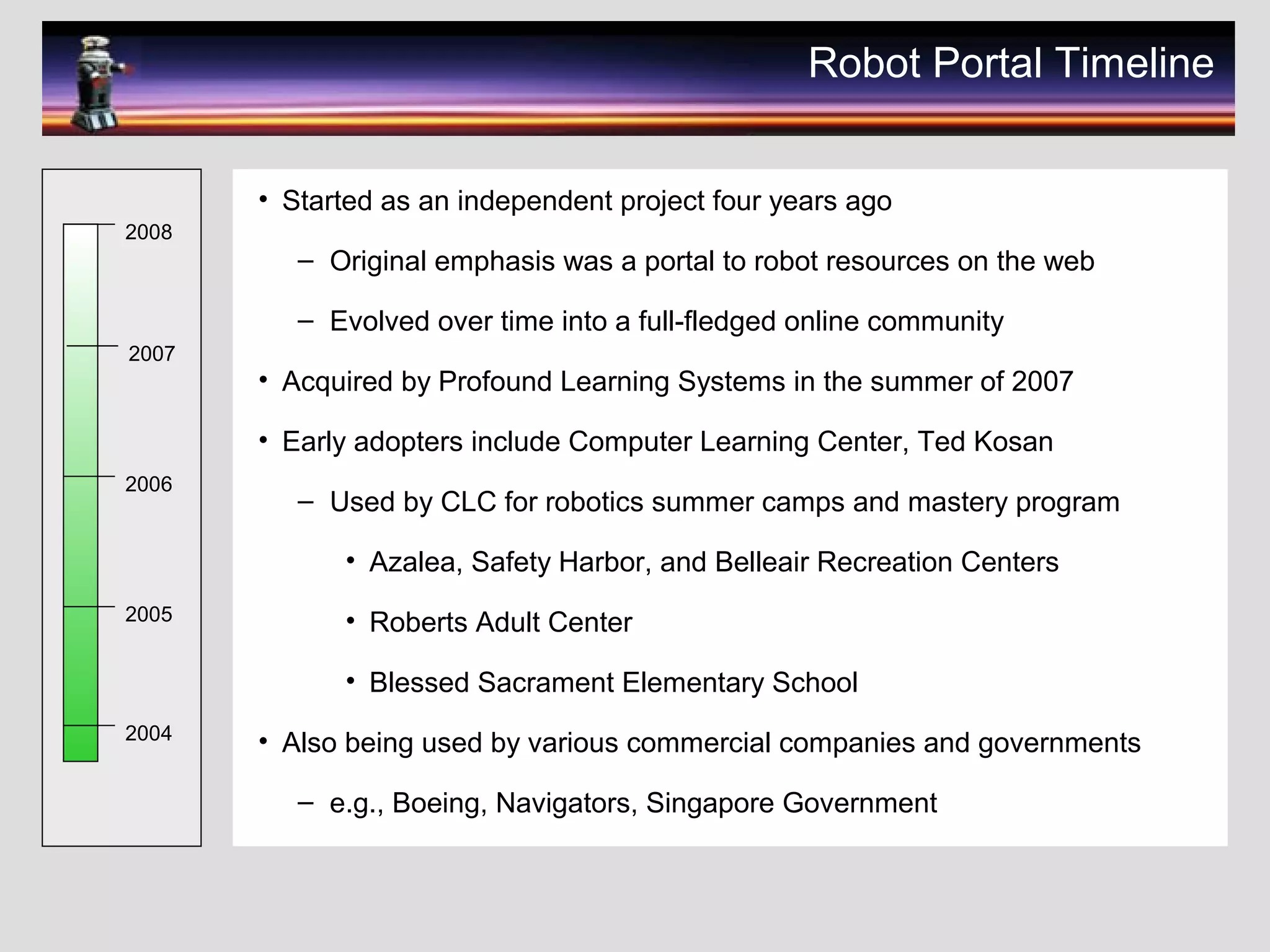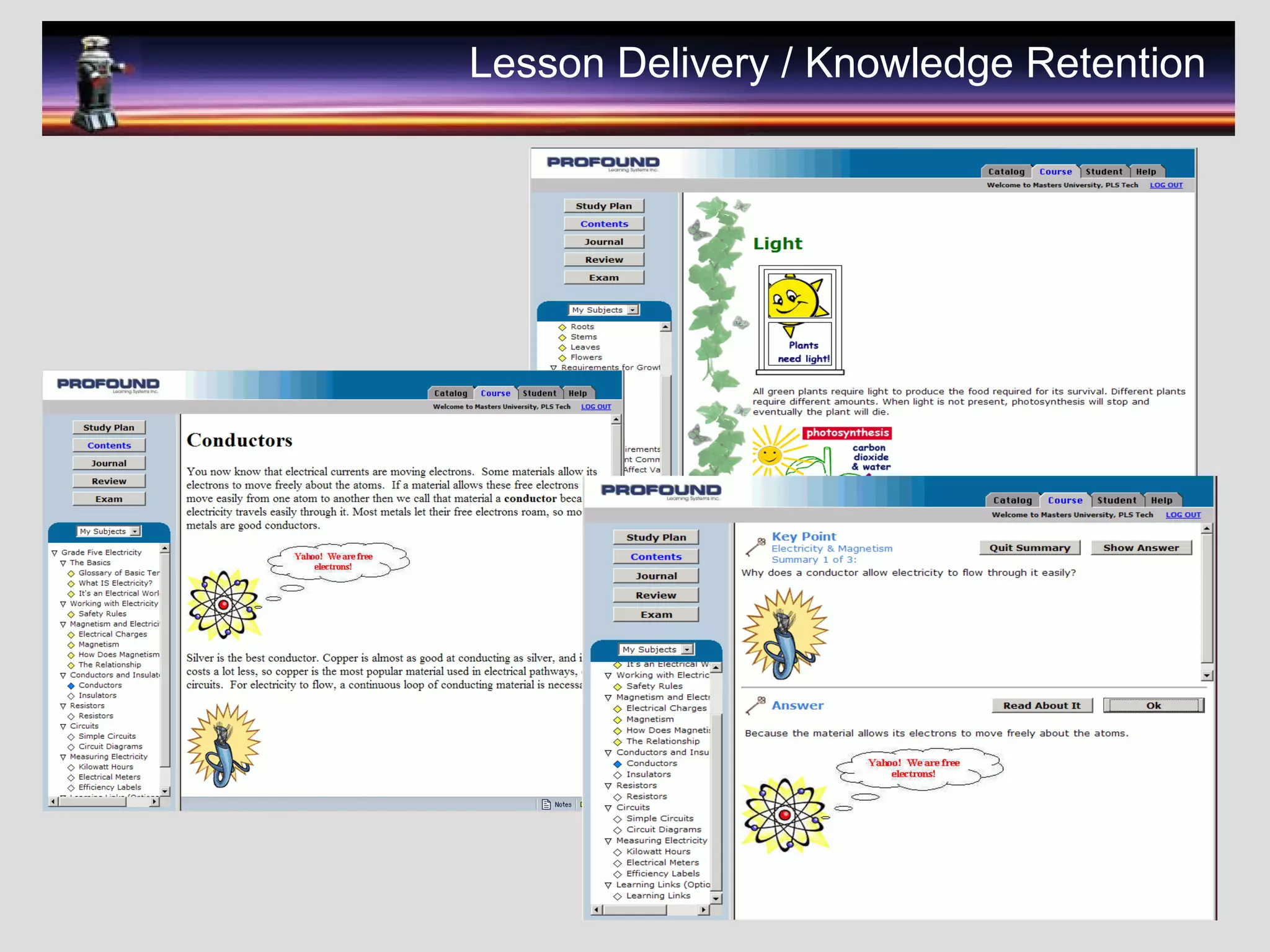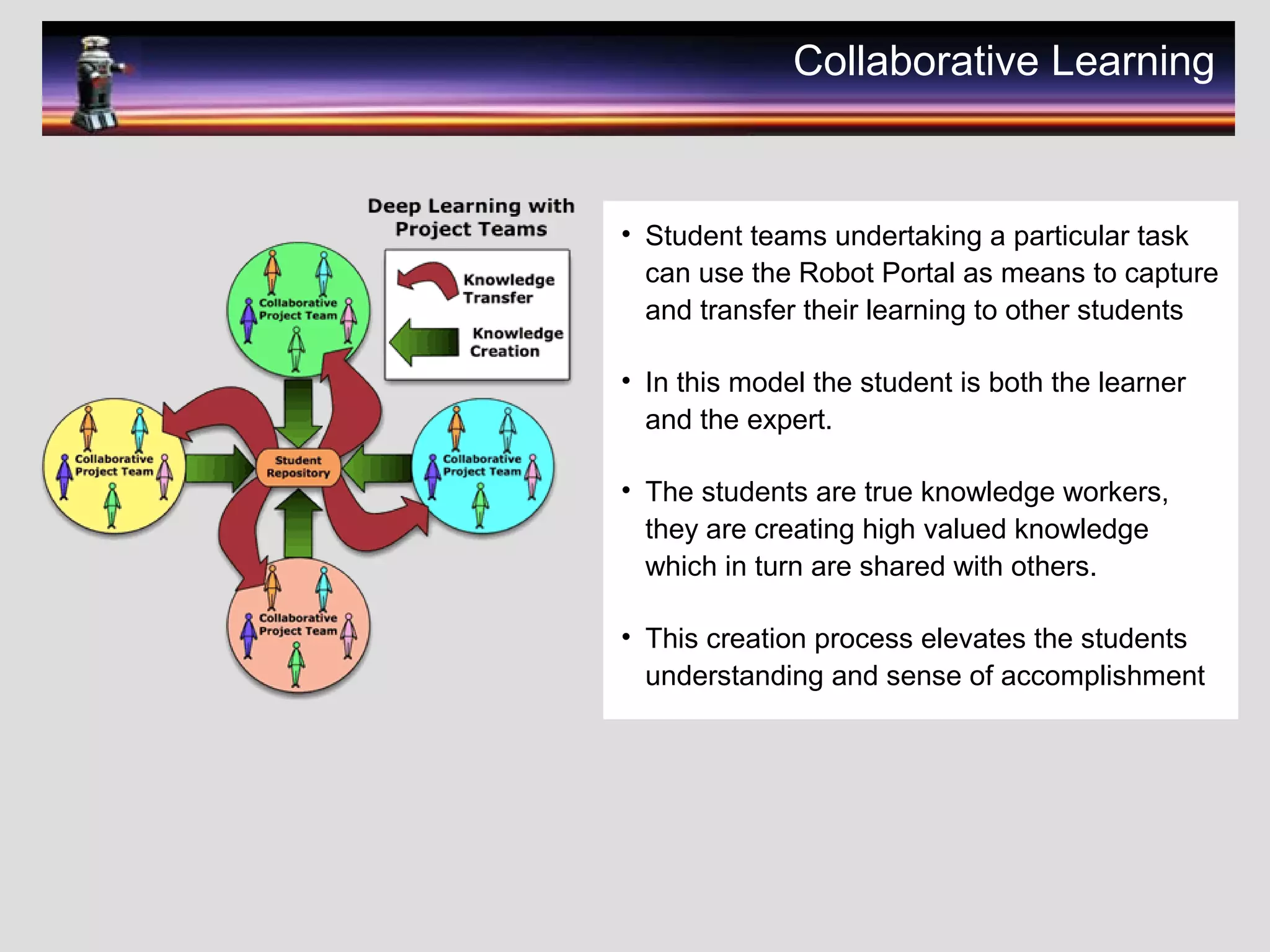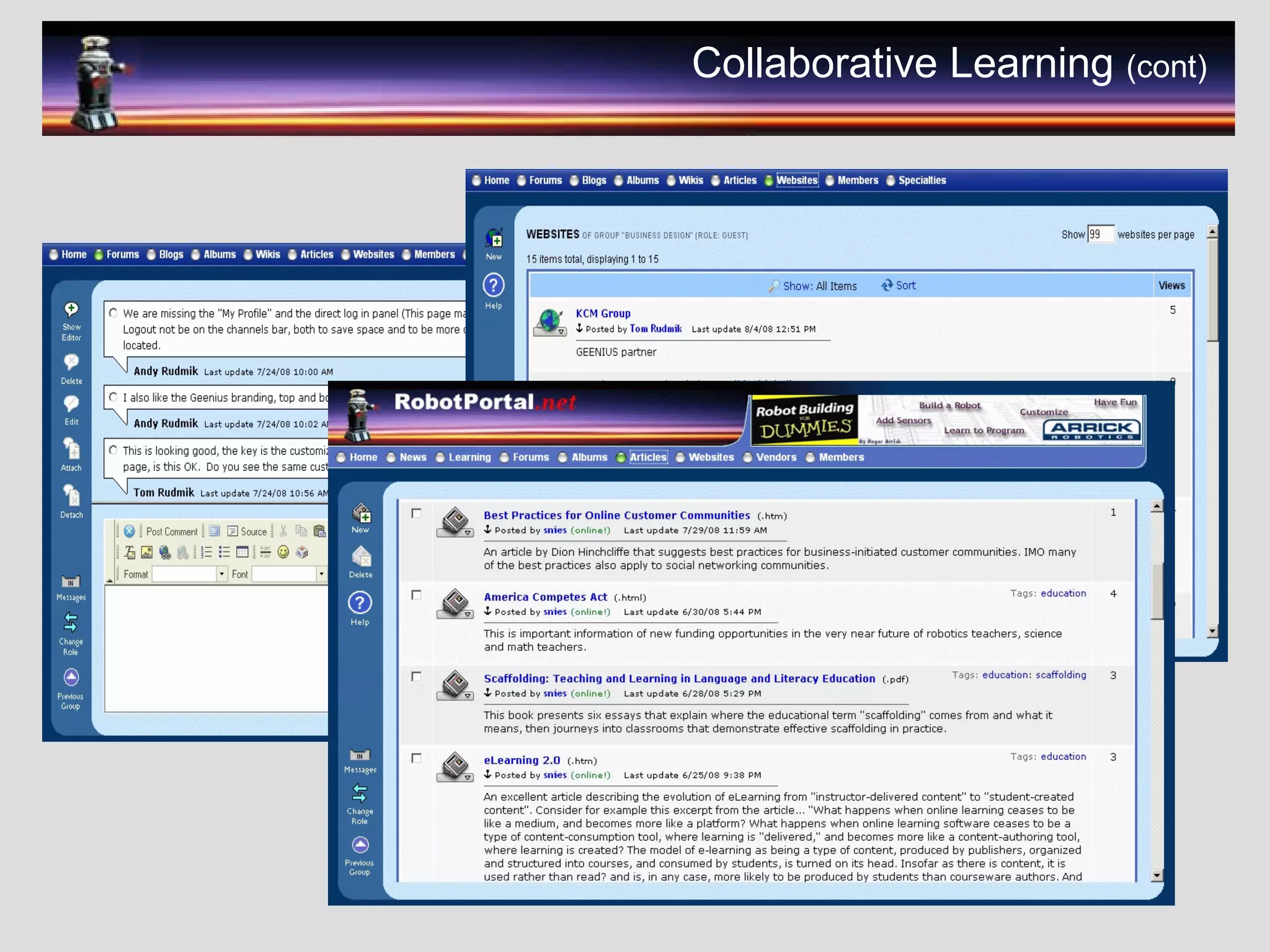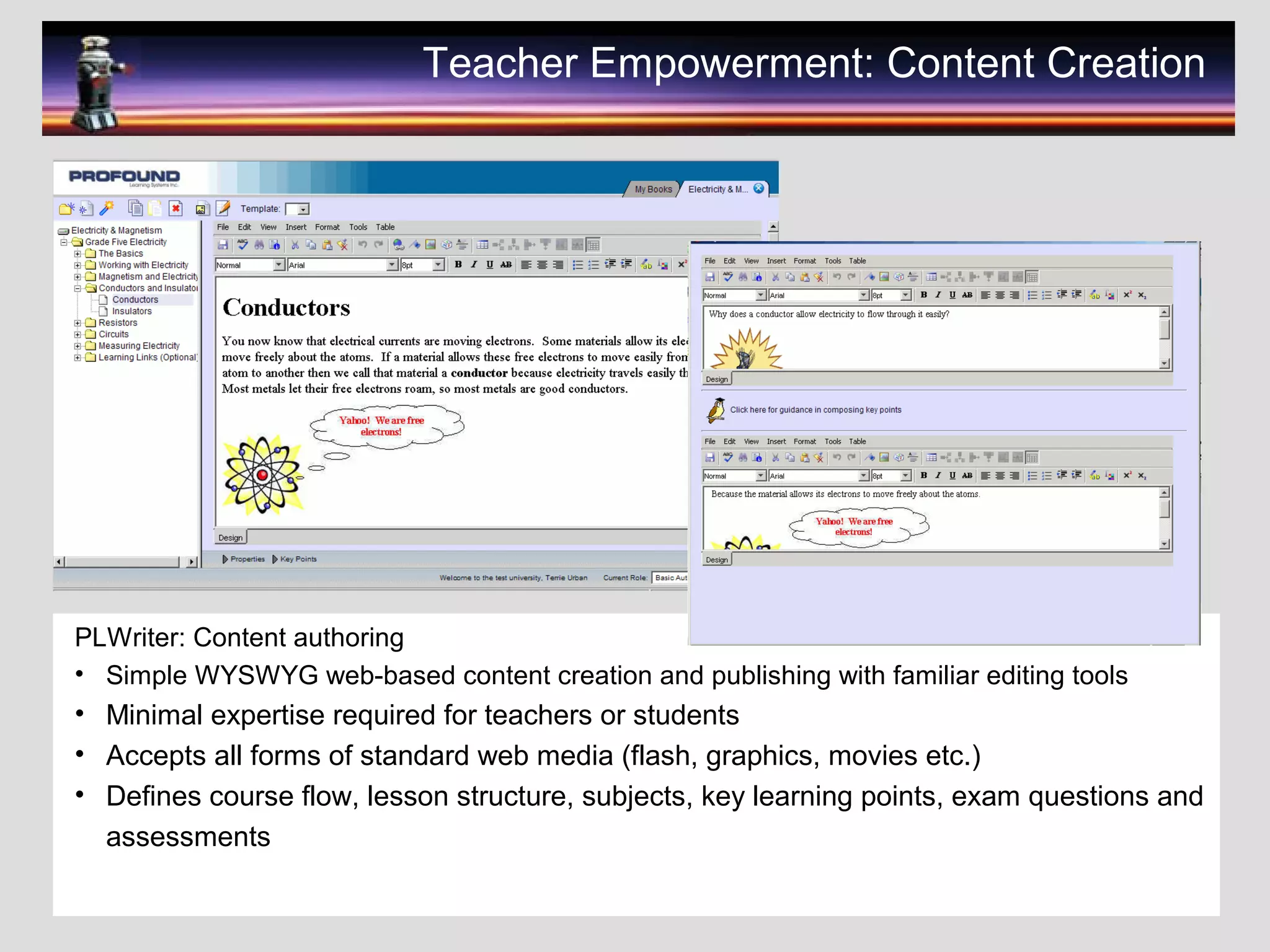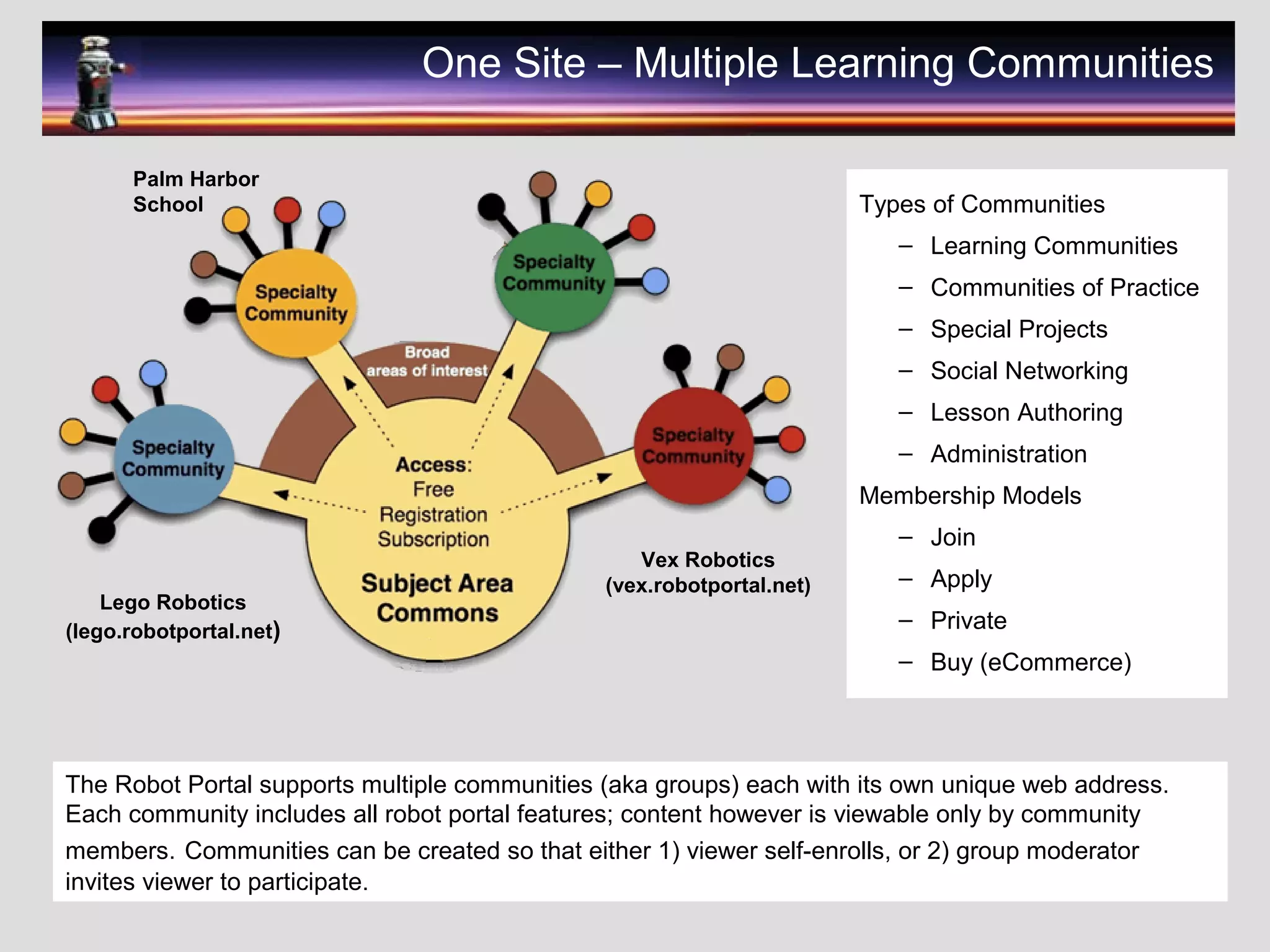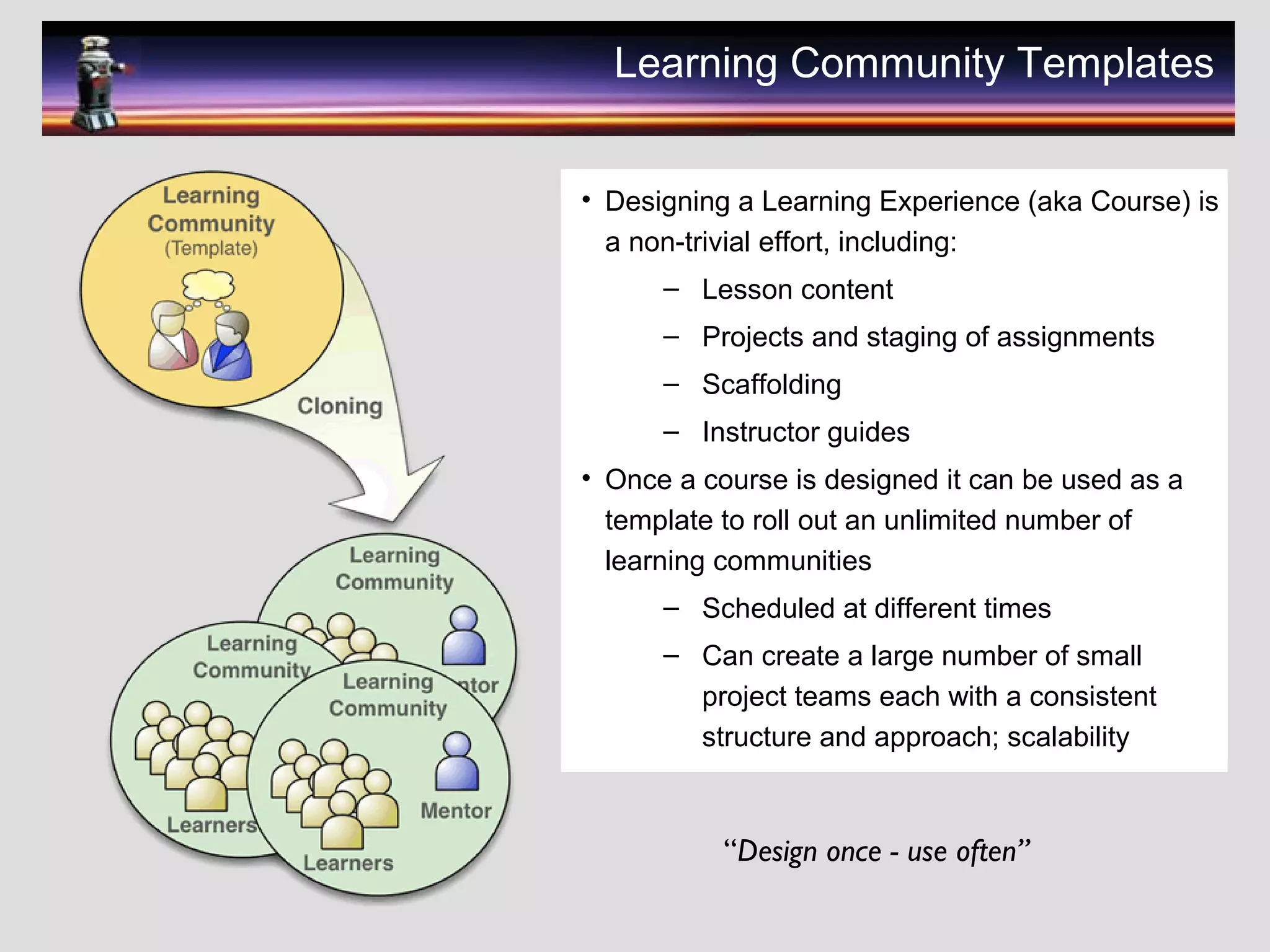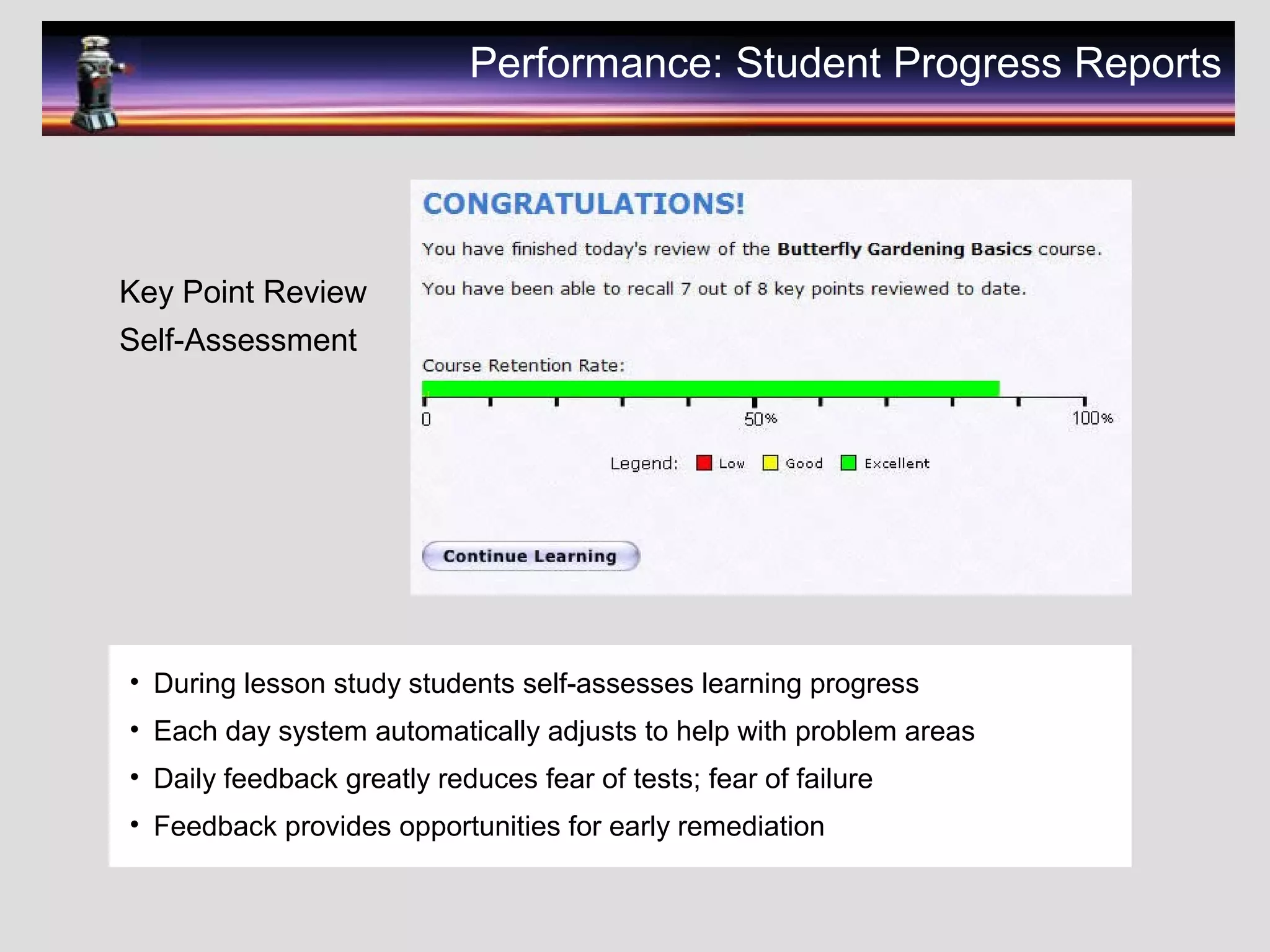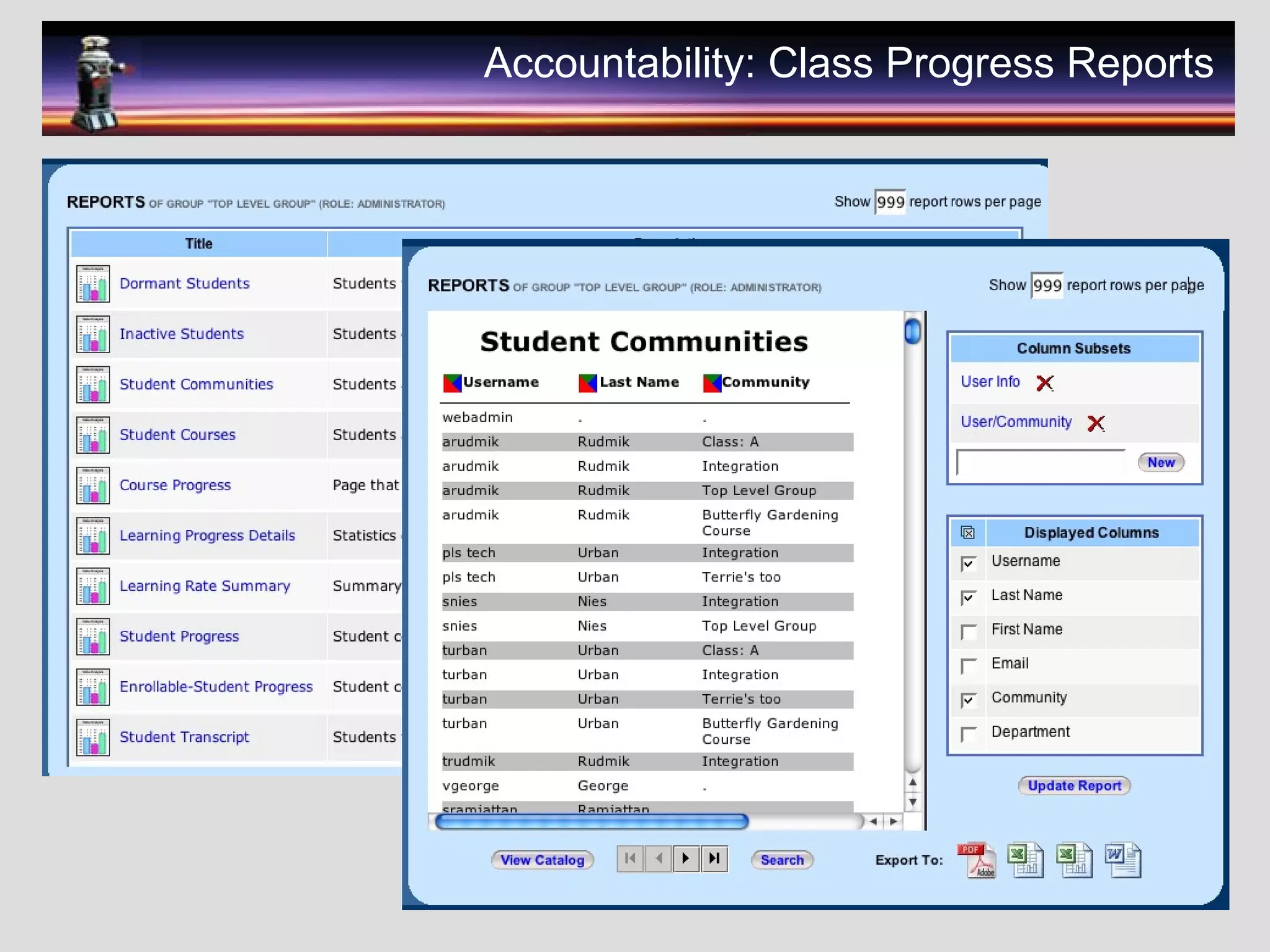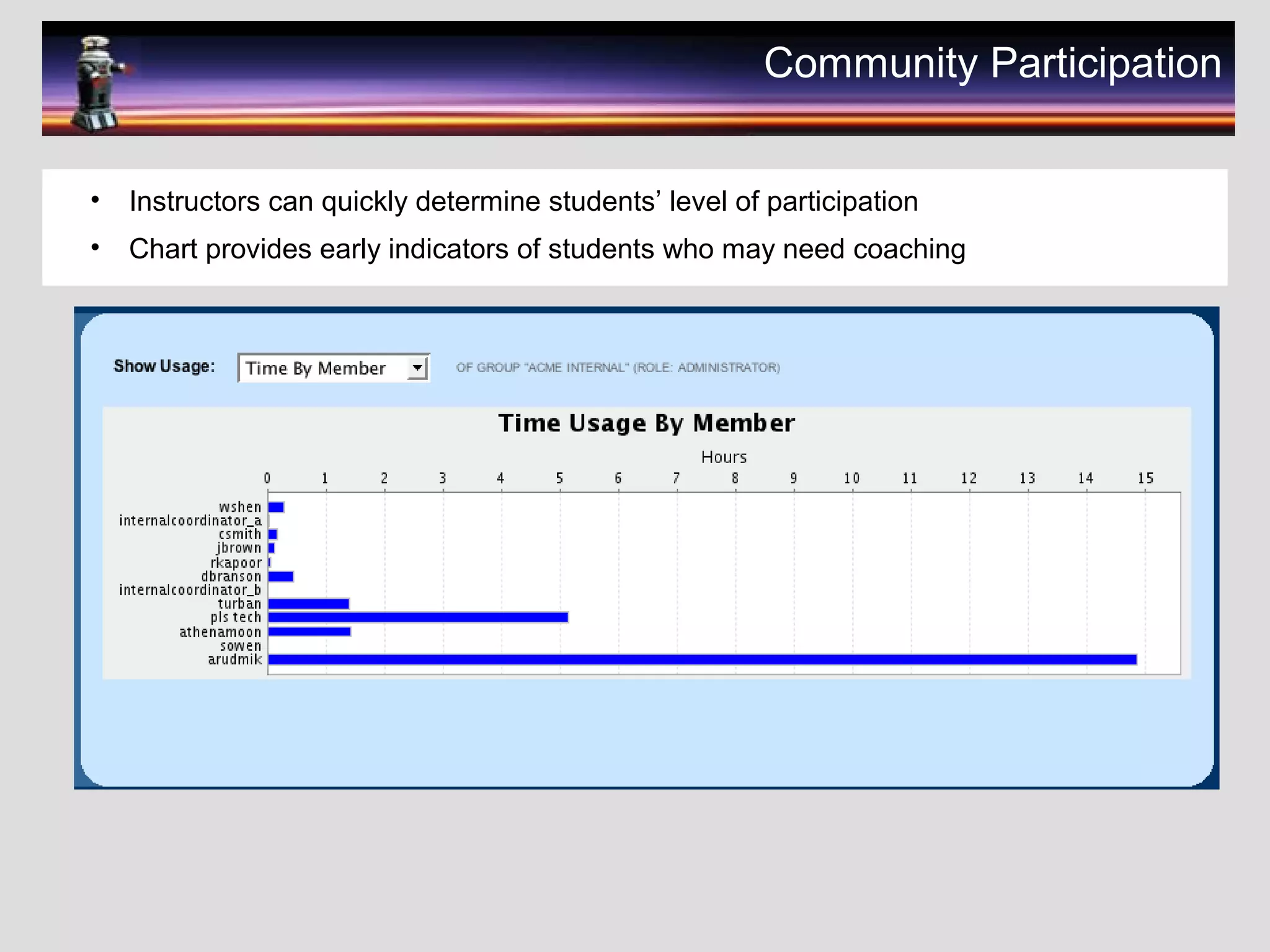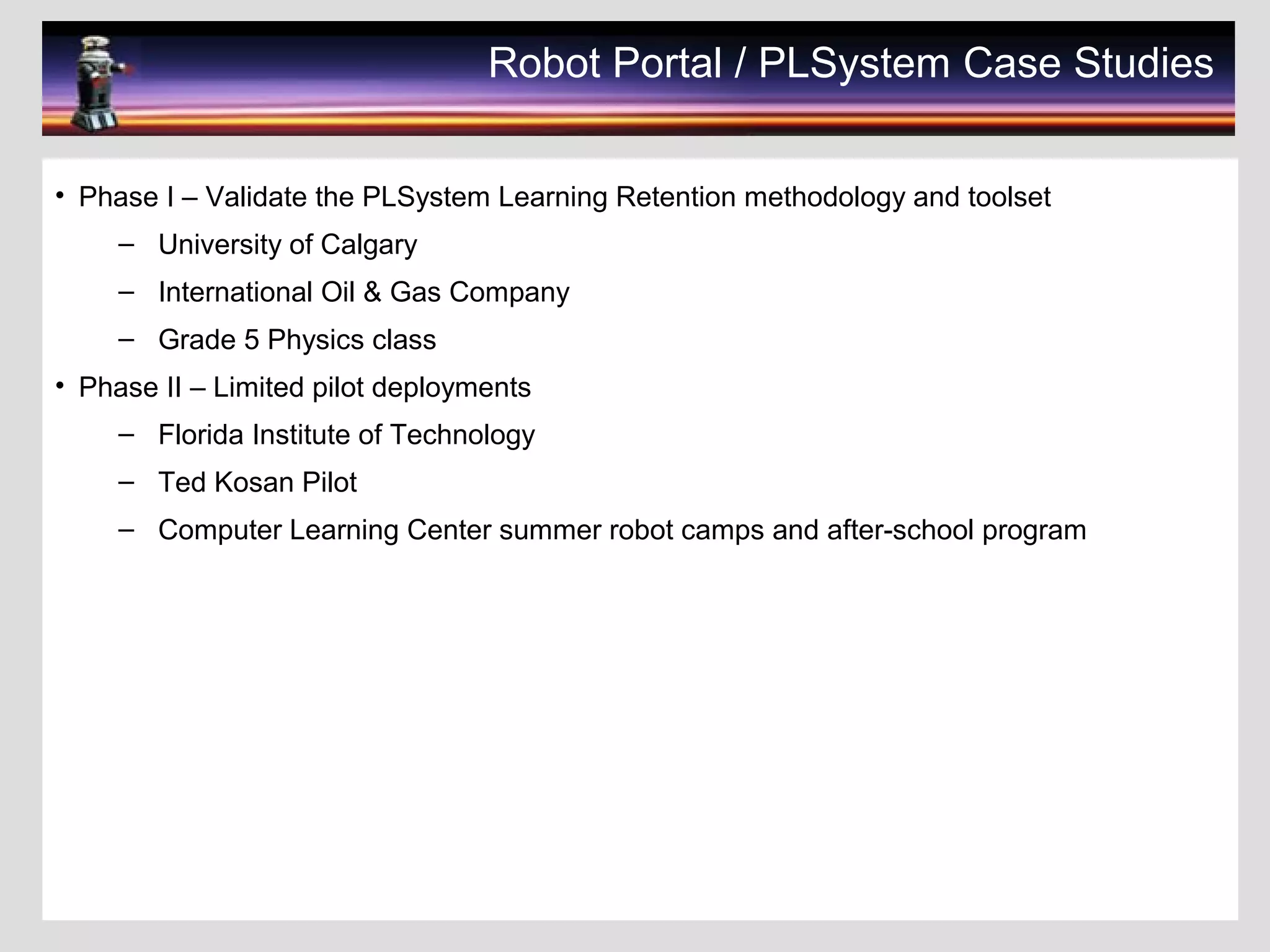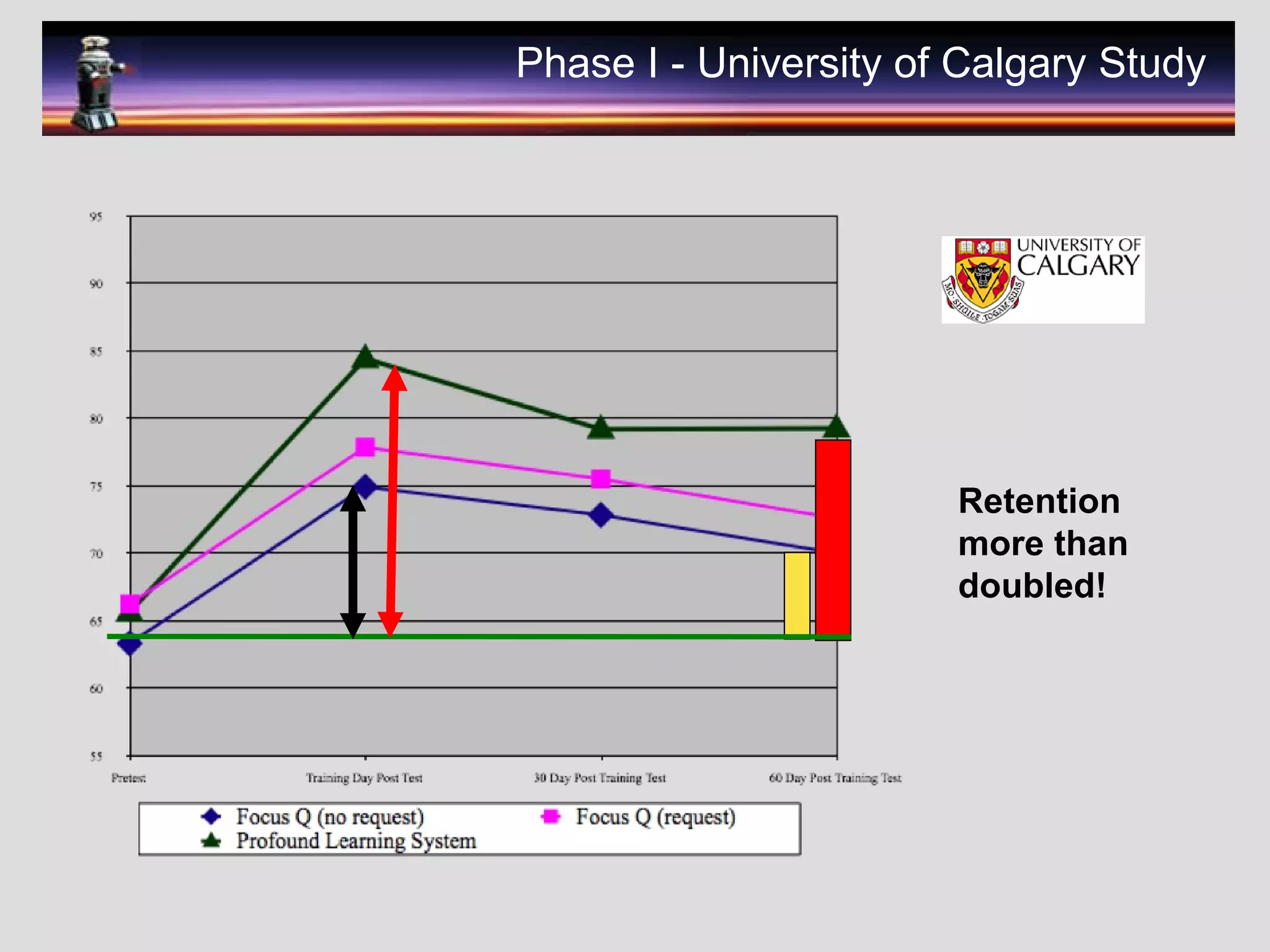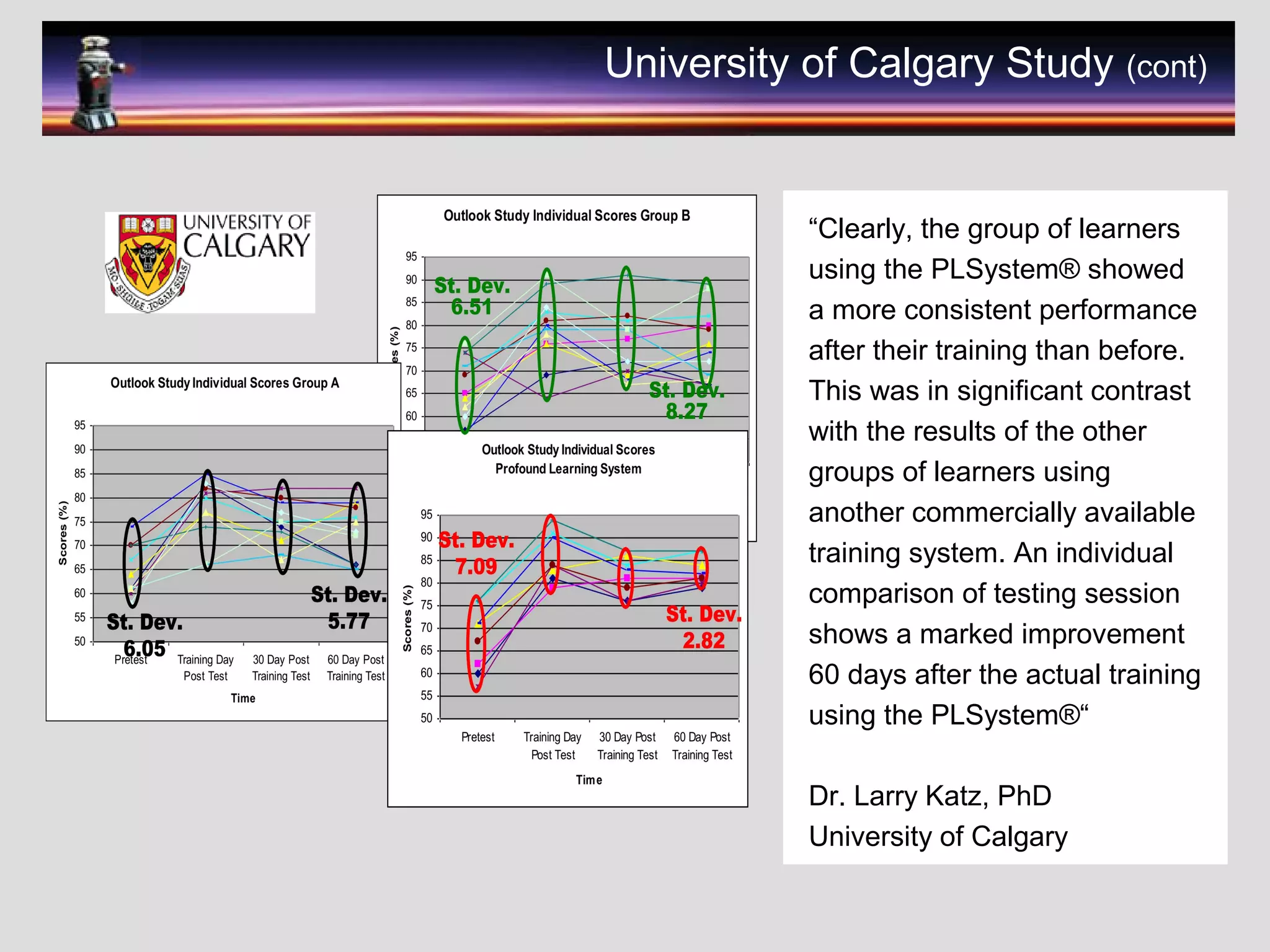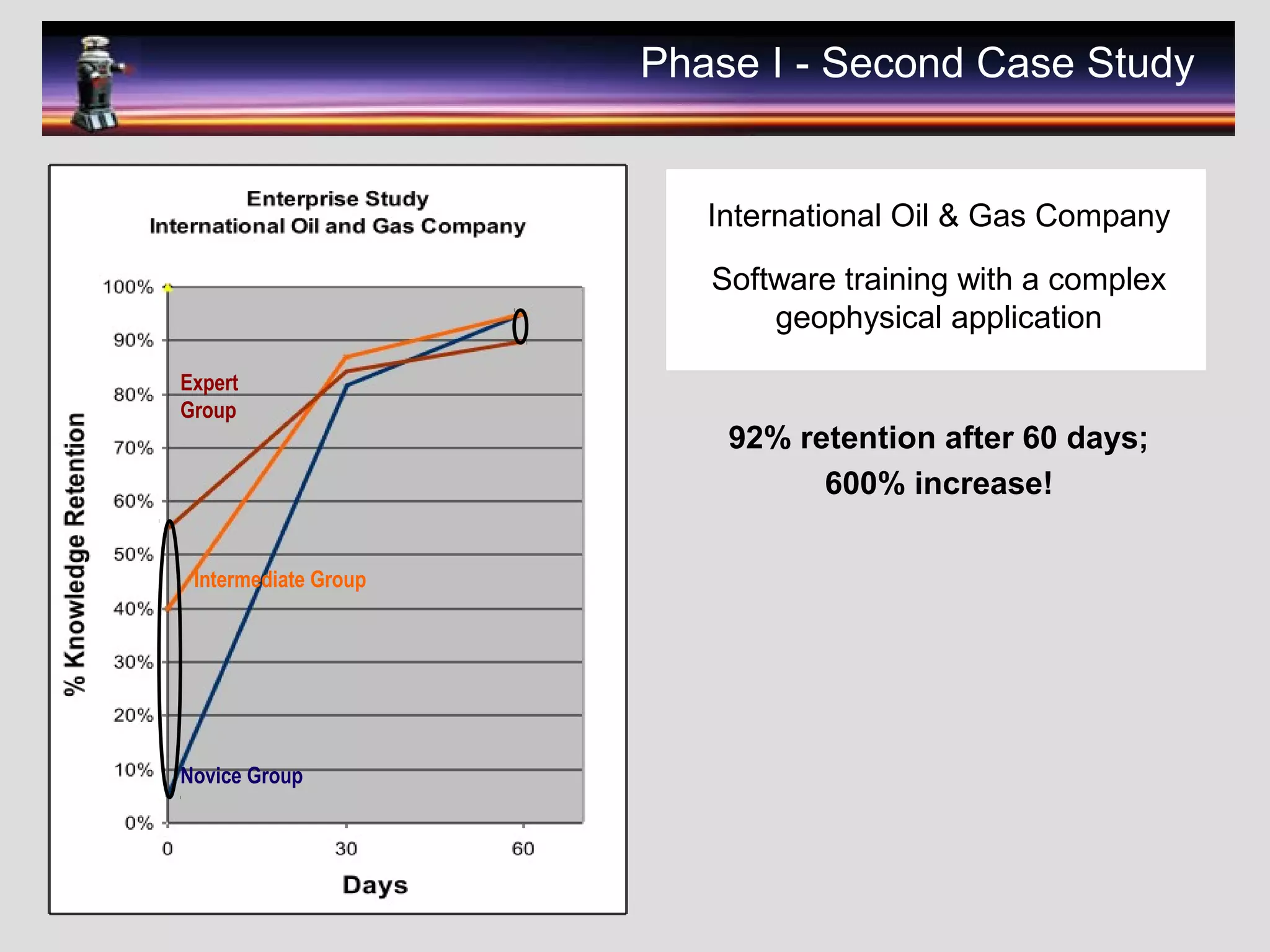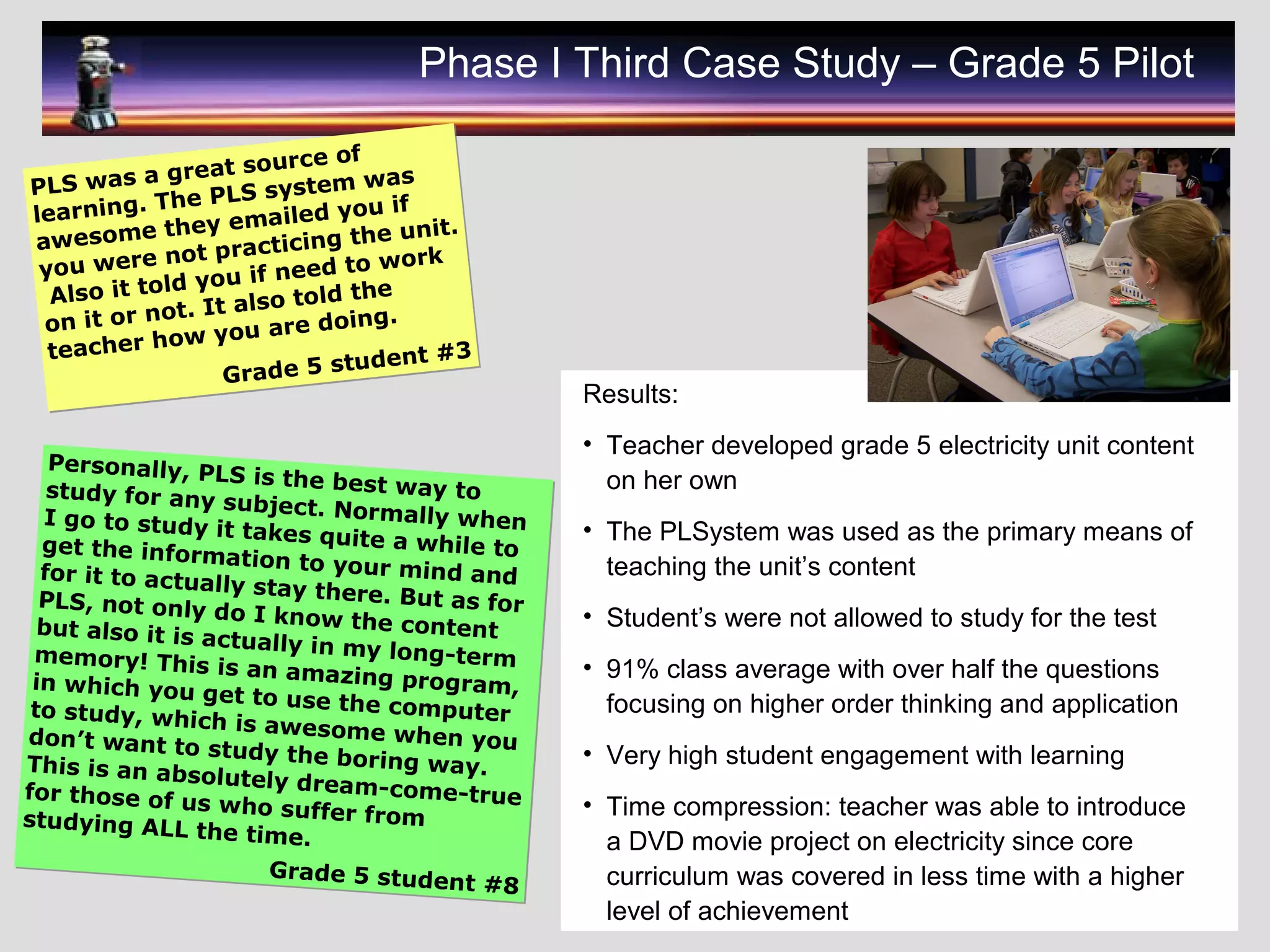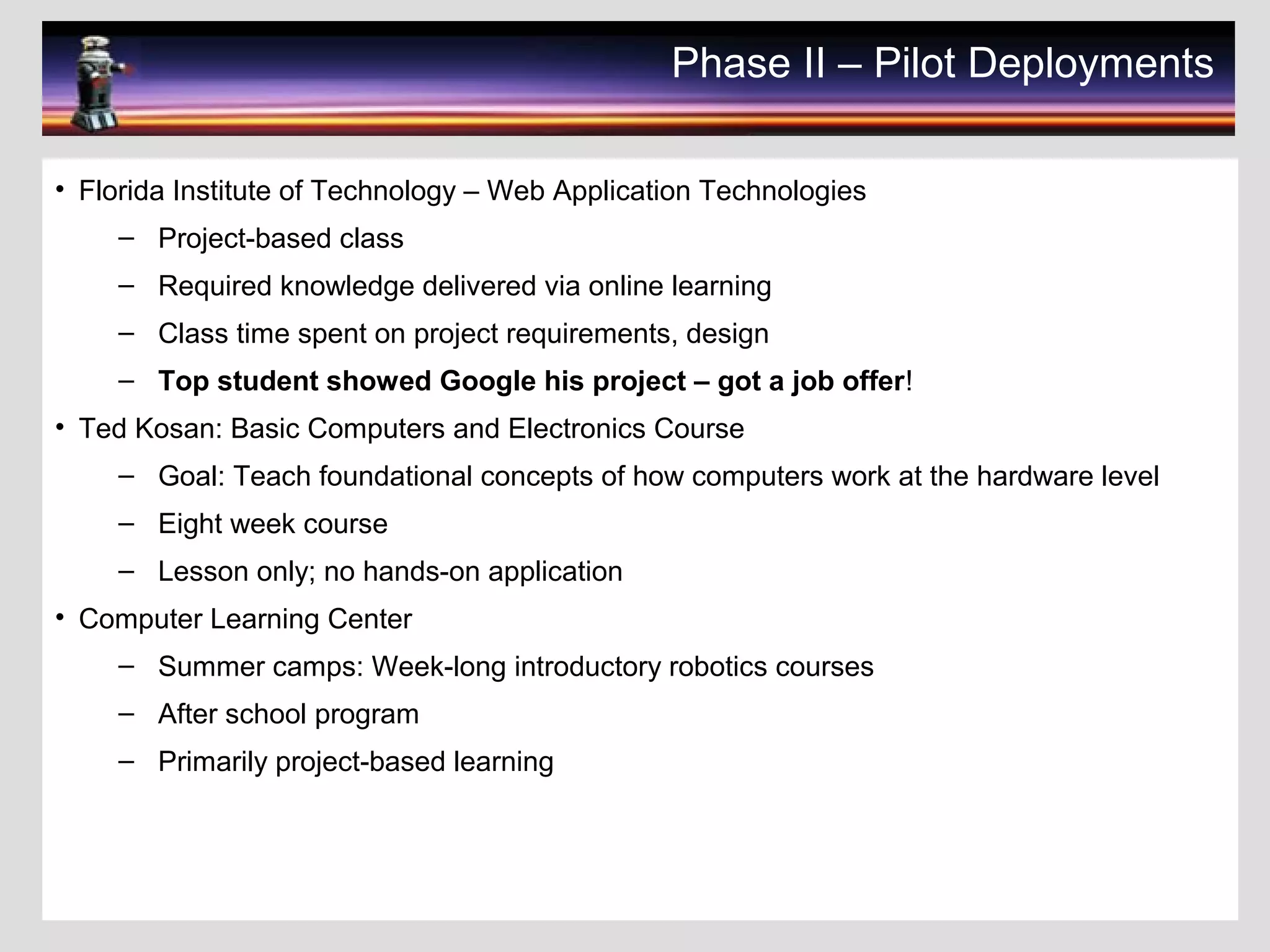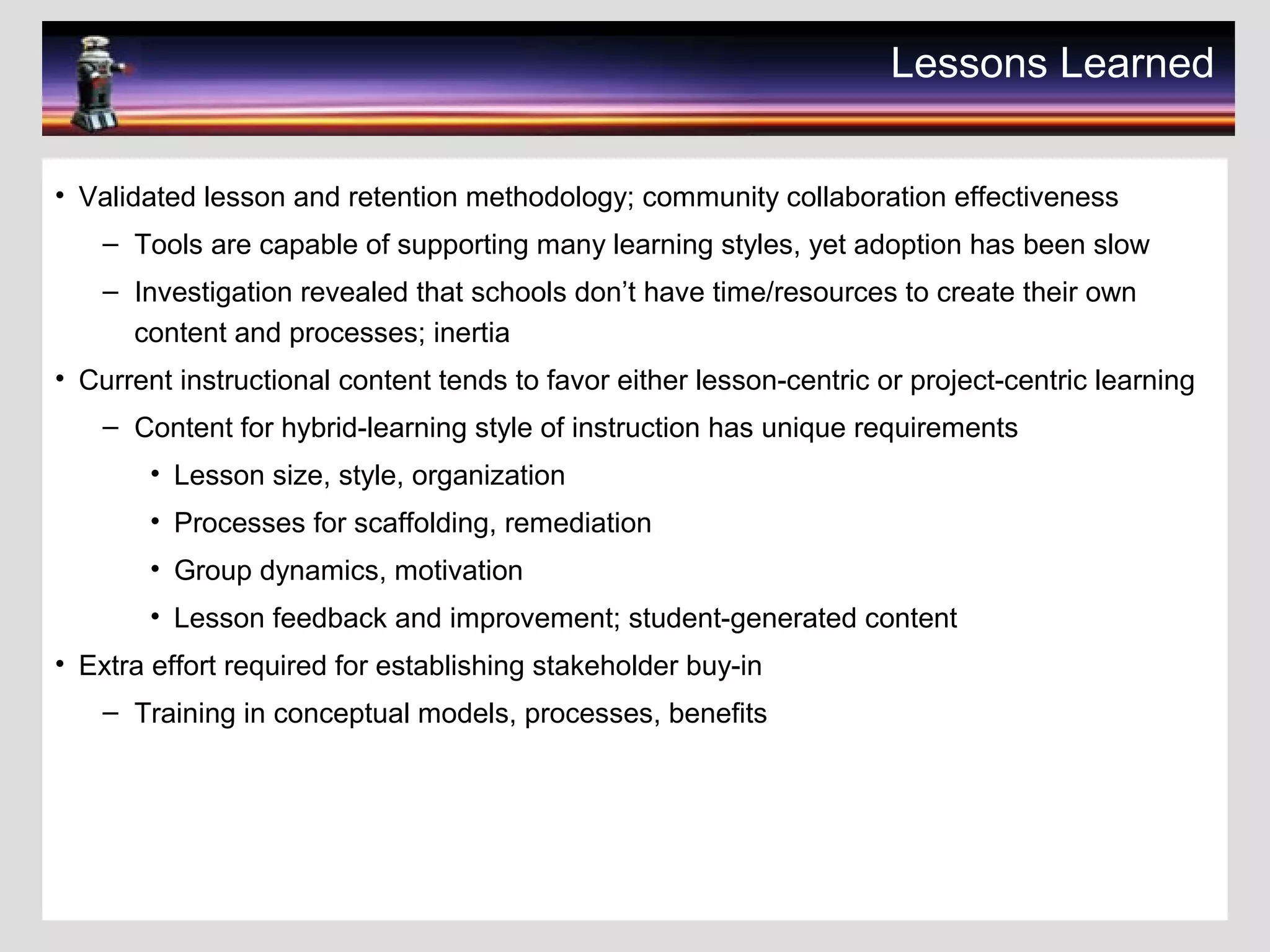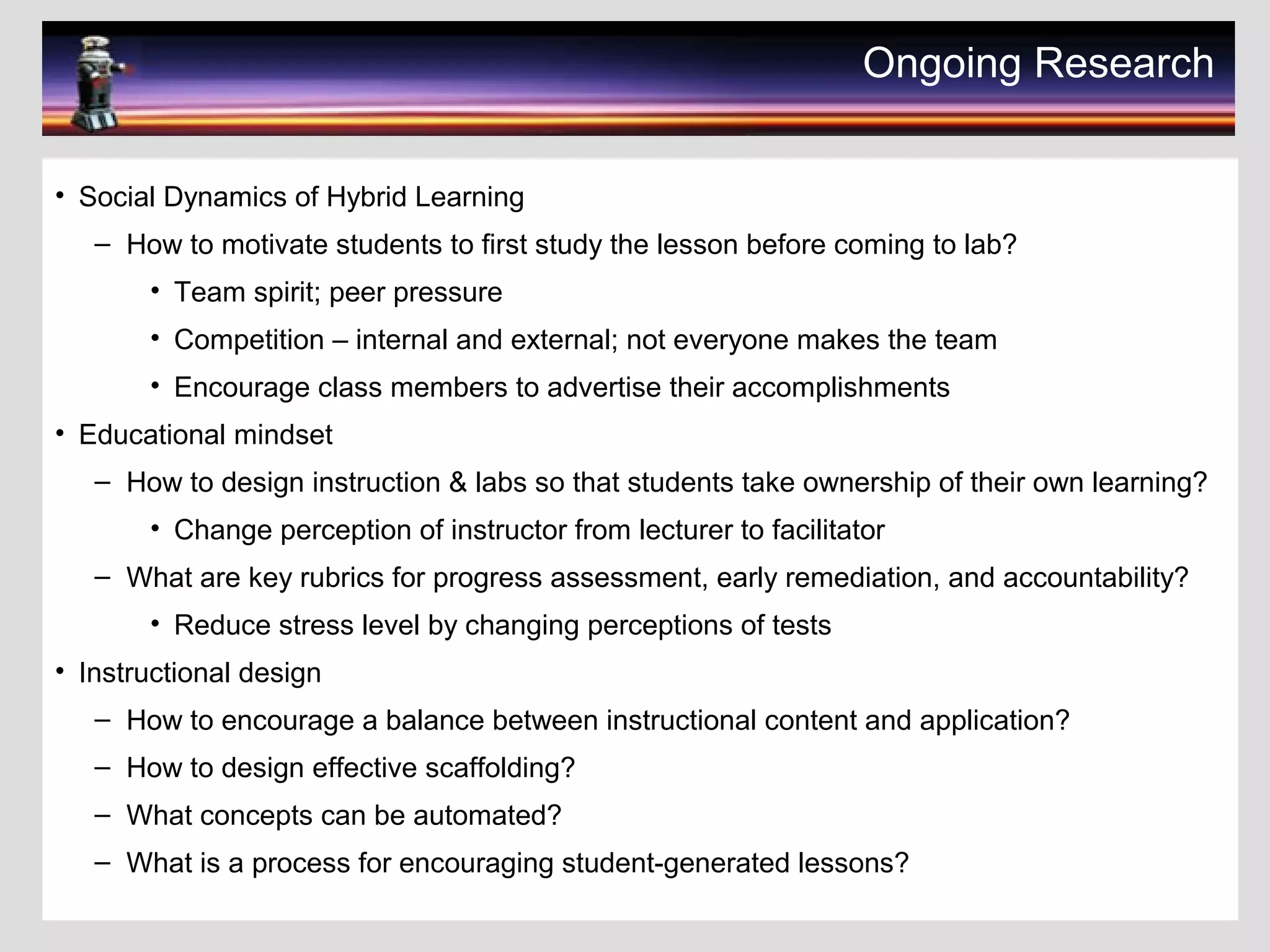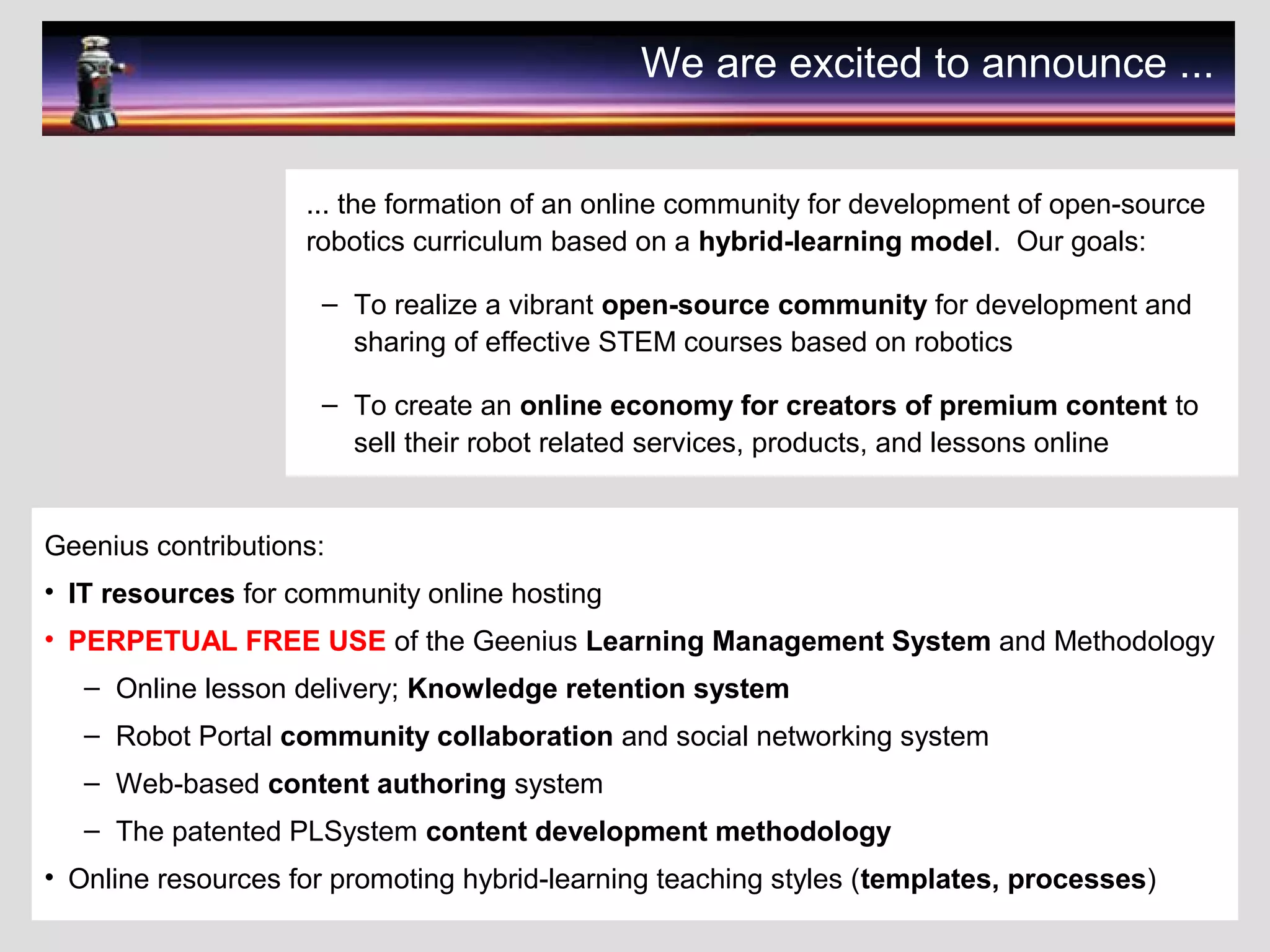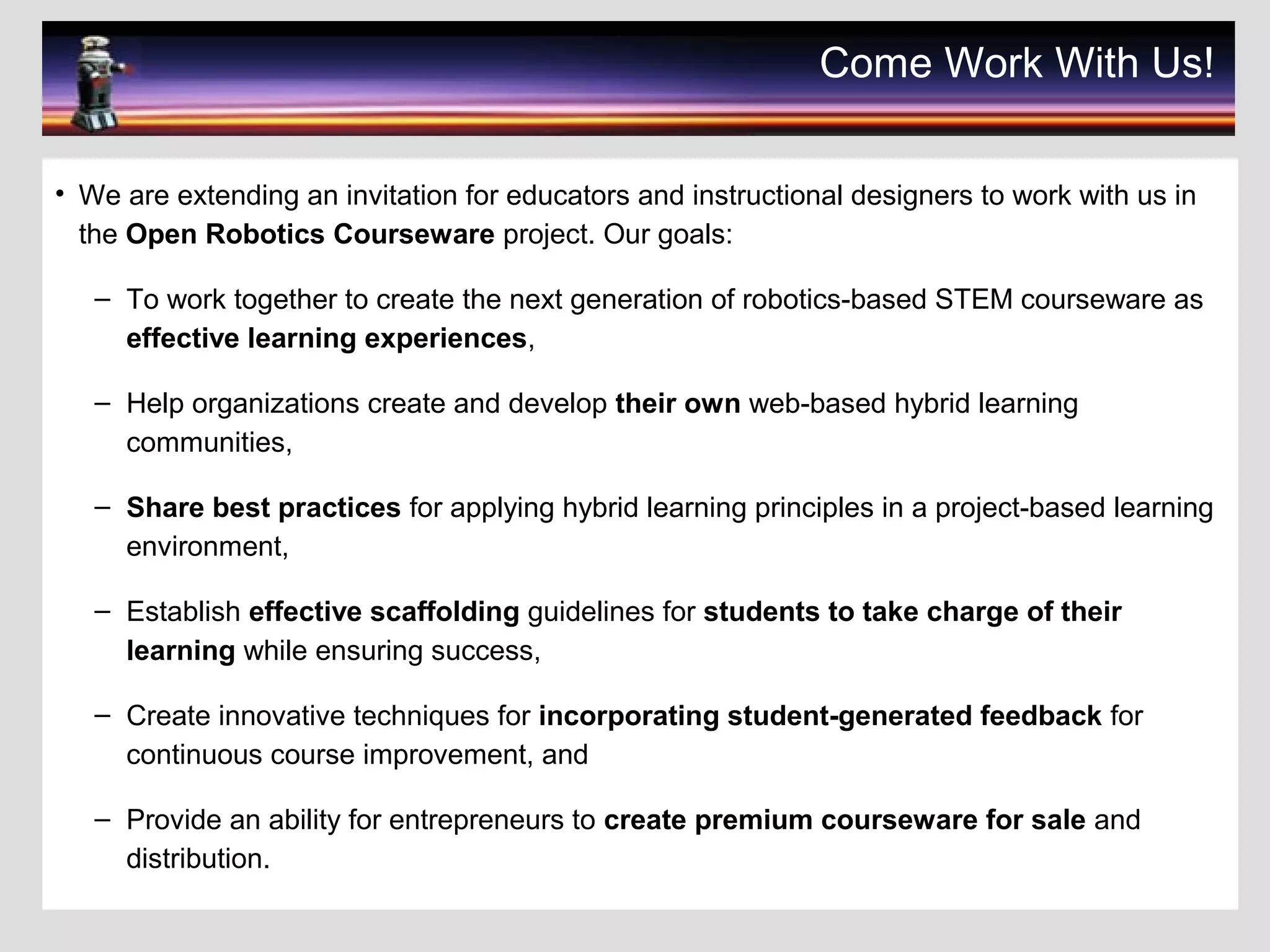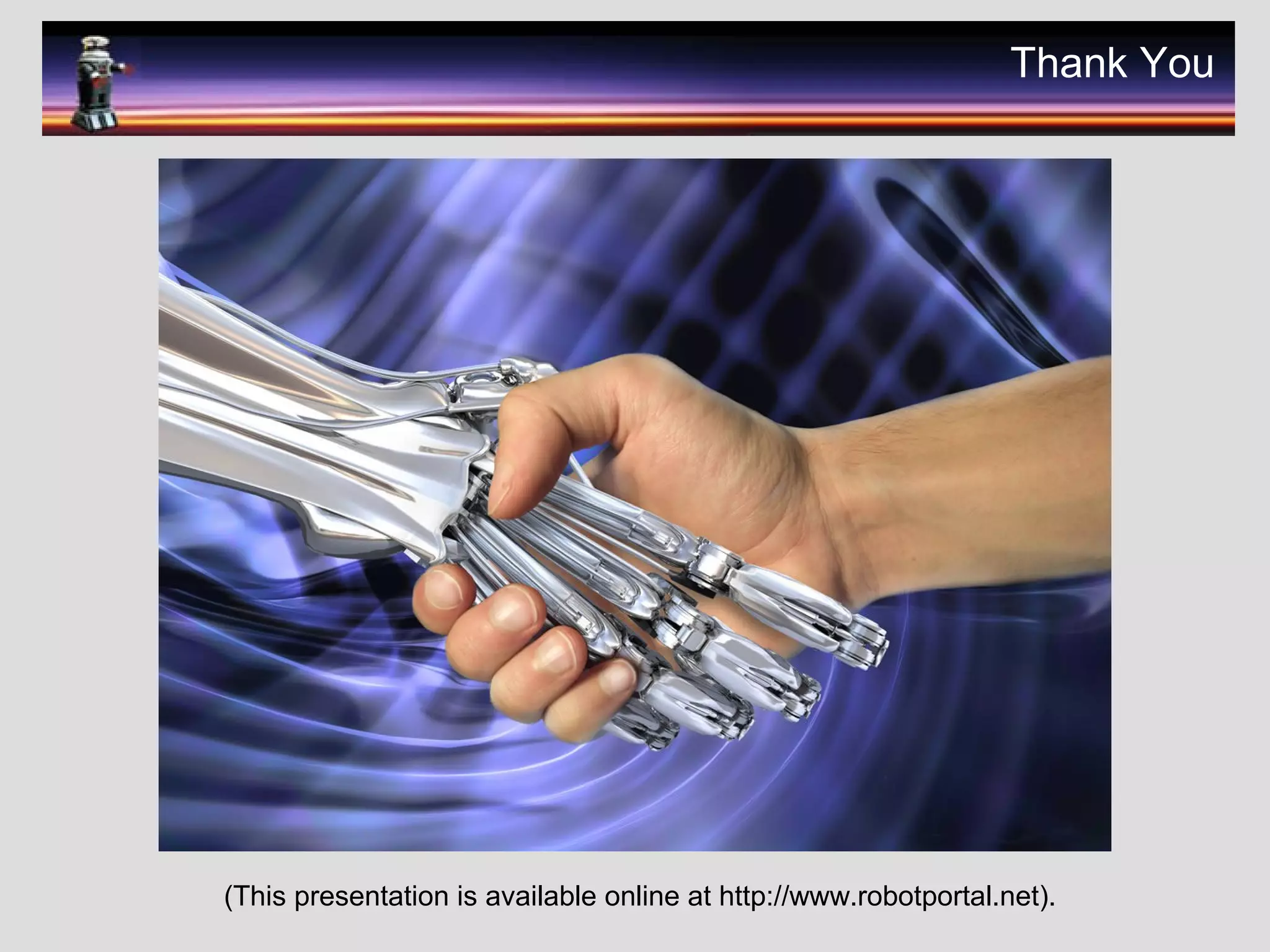The document outlines a vision for a web-based knowledge network aimed at enhancing STEM education through robotics, highlighting key contributors and their roles. It discusses the benefits of a hybrid learning model that combines online study with hands-on projects, addressing challenges such as knowledge retention and stakeholder perceptions. The Robot Portal platform is introduced as a collaborative space for educators and students to share resources and engage in project-based learning, with an invitation for collaboration on developing open-source robotics curriculum.
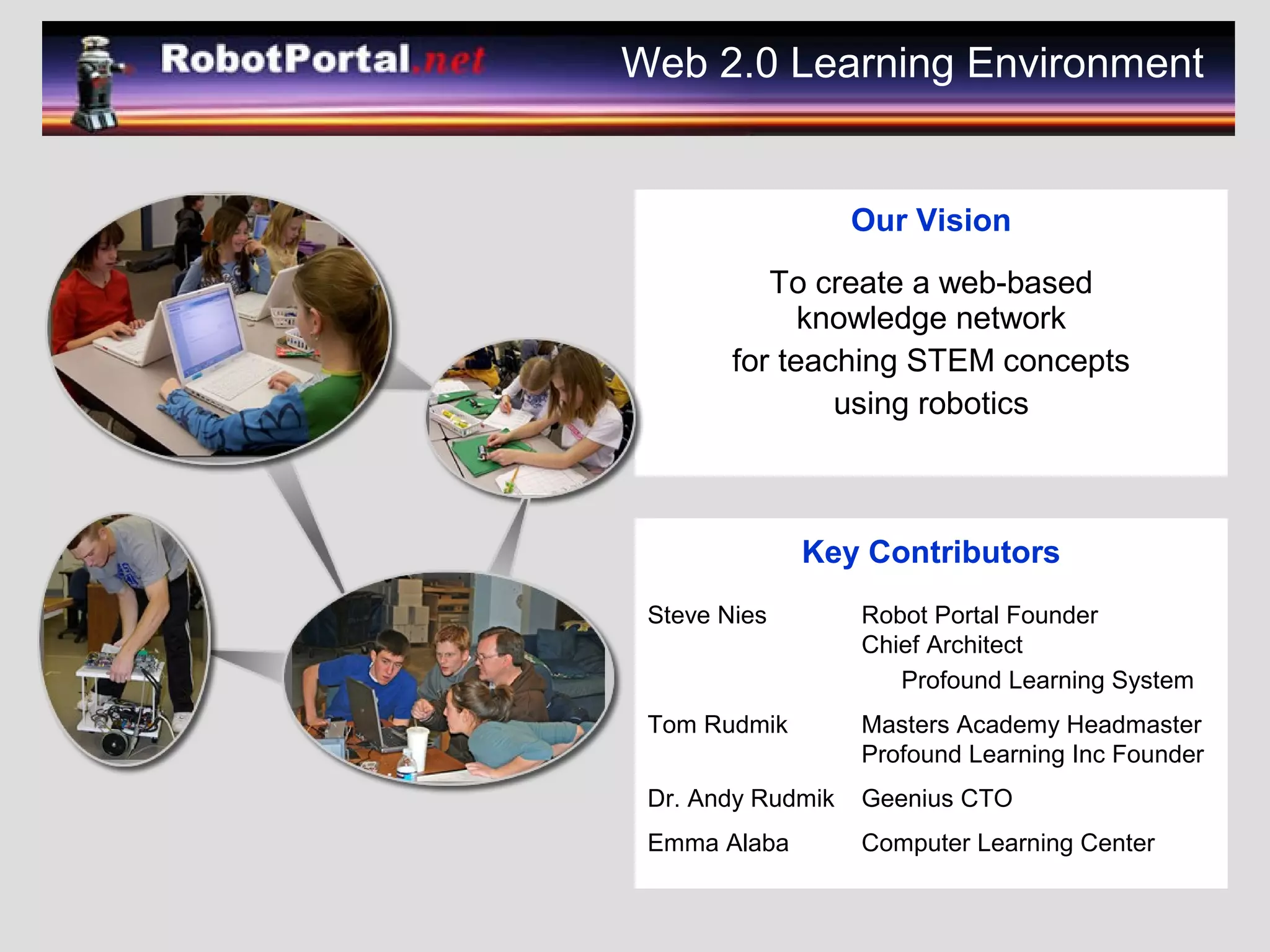
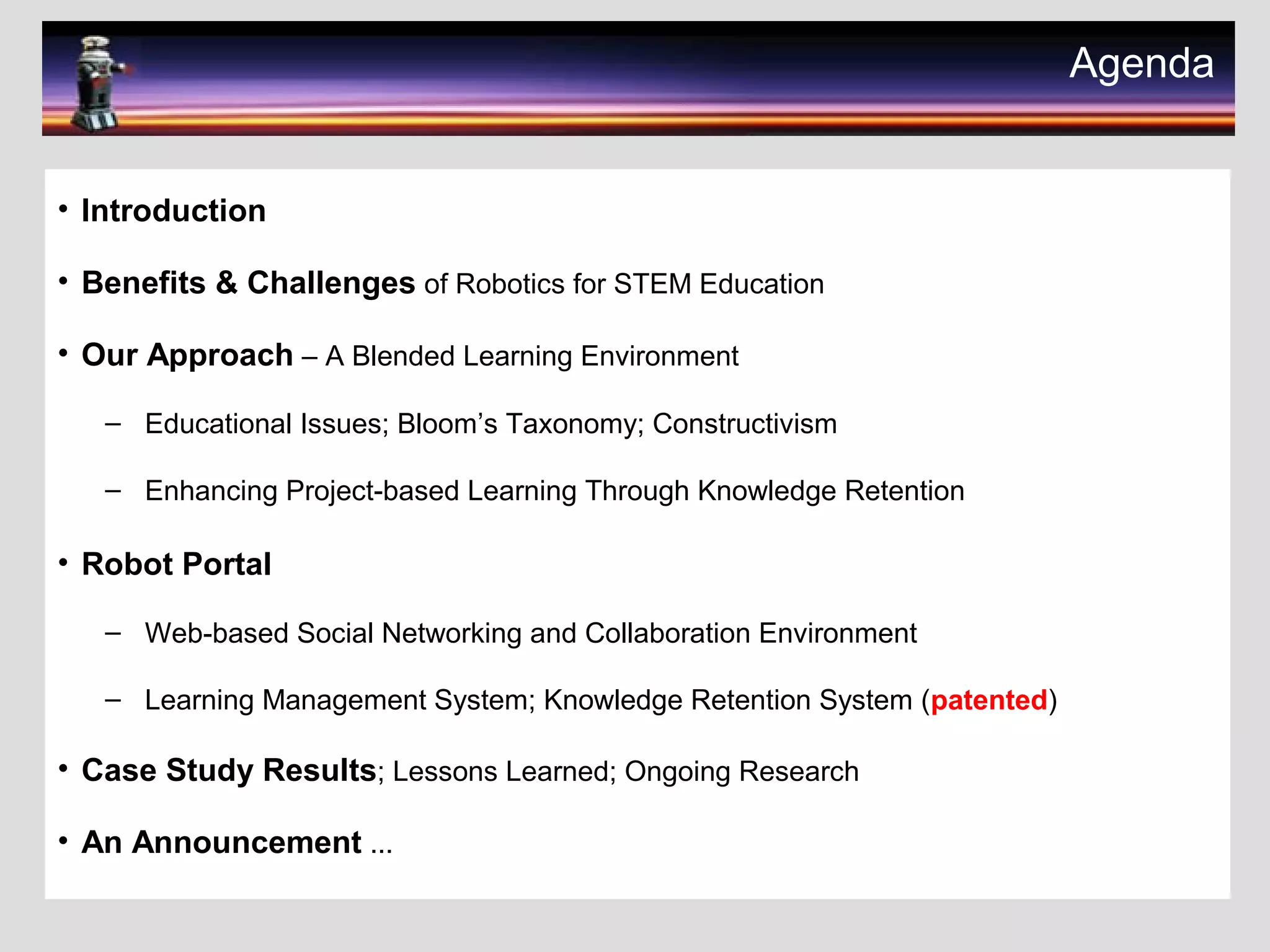
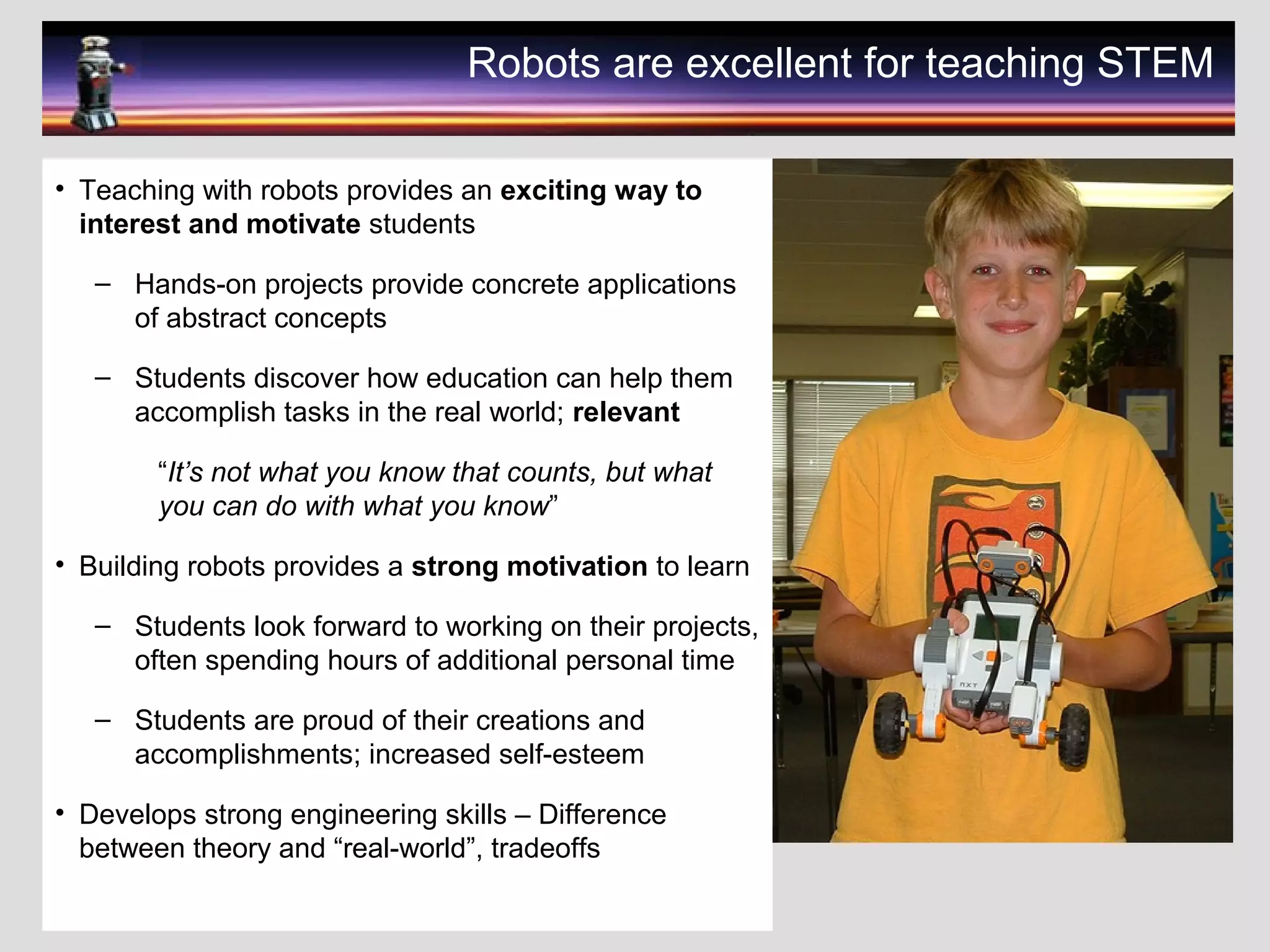


![Hybrid Learning Benefits
An excellent case study is at http://campustechnology.com/articles/48204
Some highlights:
• Learning how to learn for oneself is the foundational challenge of all education. In a
Hybrid Learning model students become central to their own learning processes.
• Students are free to explore, comment on, and modify the instructional content and
content they discover or create through the learning process.
• If students are provided with online material, online learning resources, and time to
reflect, interact, and produce learning objects or evidences of learning, then class time
should not resort to passive learning such as lecture.
• Students look for teacher intervention more directly in an online environment than in a
face to face environment.
• [Blogs] often helped students realize the relevancy of the course for their specific
interests, and it was often not until their learning has been summarized and synthesized
that students appreciated the learning that had taken place.](https://image.slidesharecdn.com/presentation-12537943843347-phpapp03/75/Robot-Portal-6-2048.jpg)
